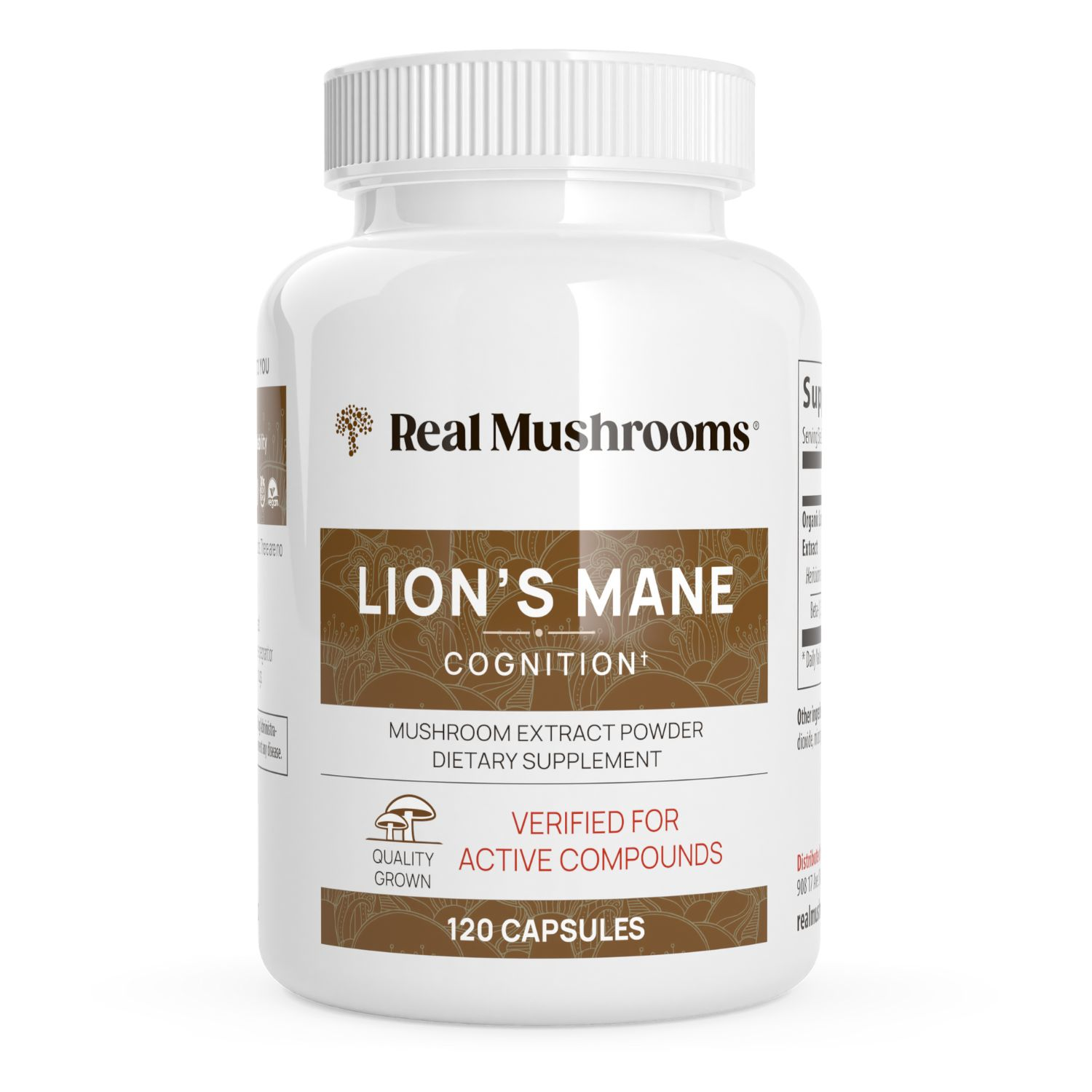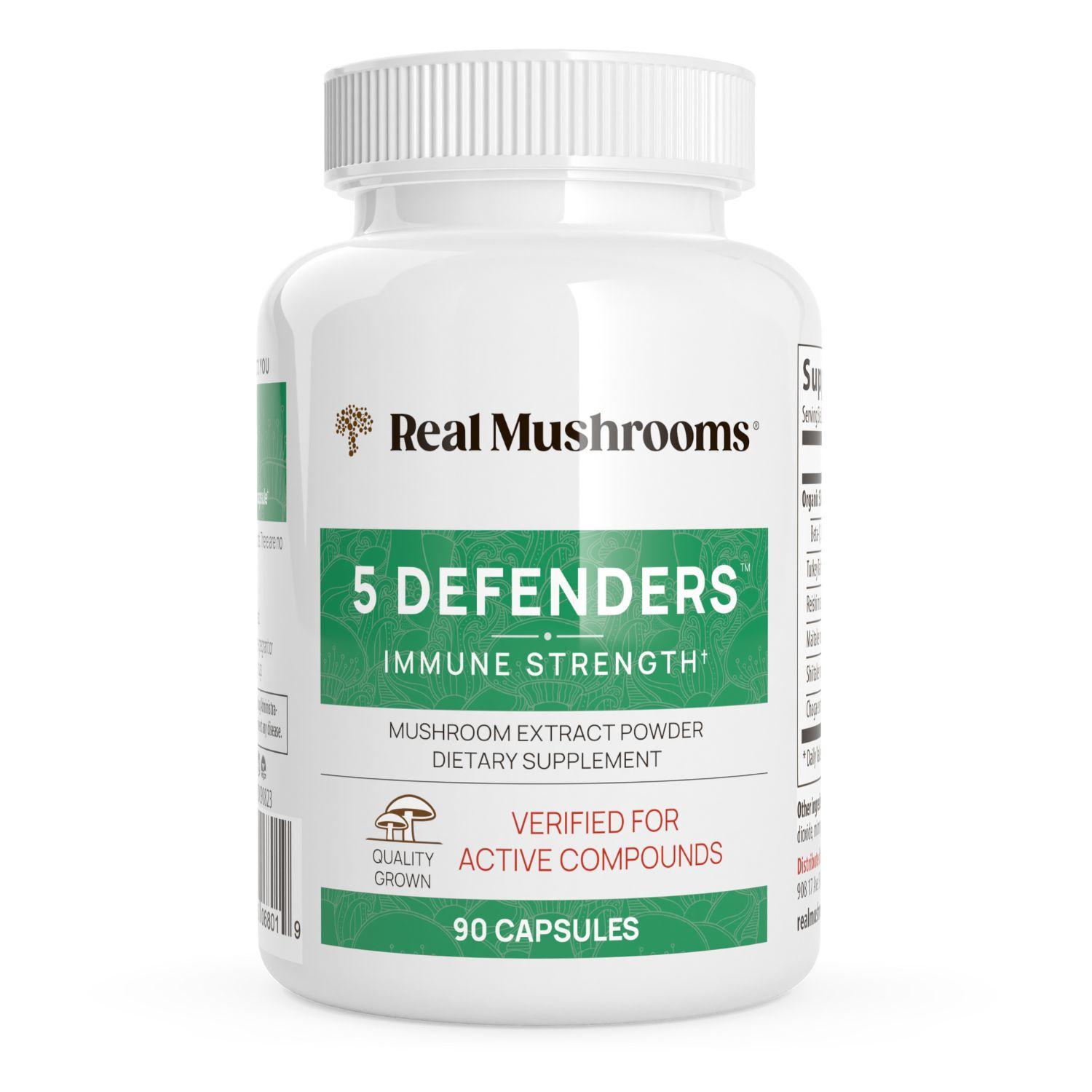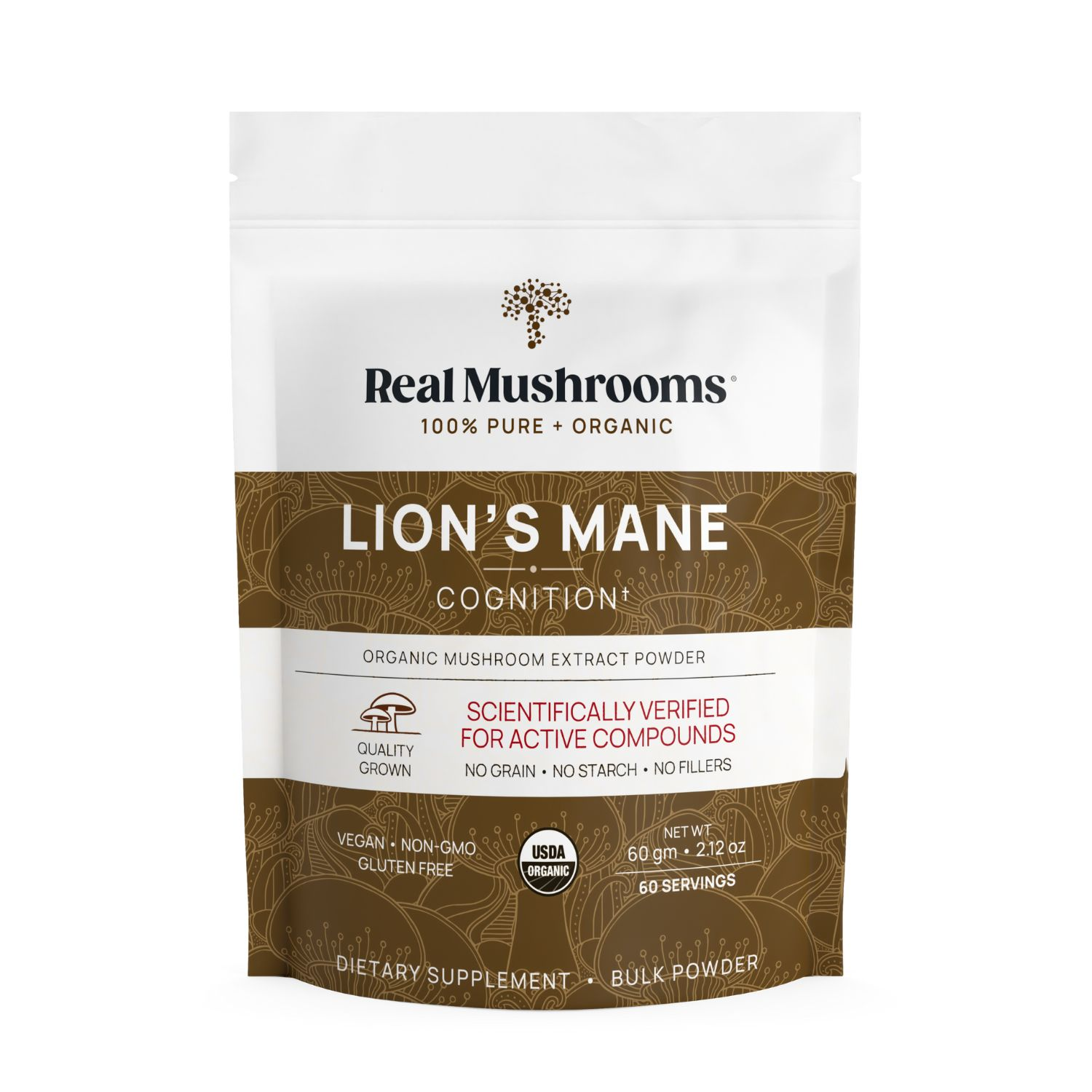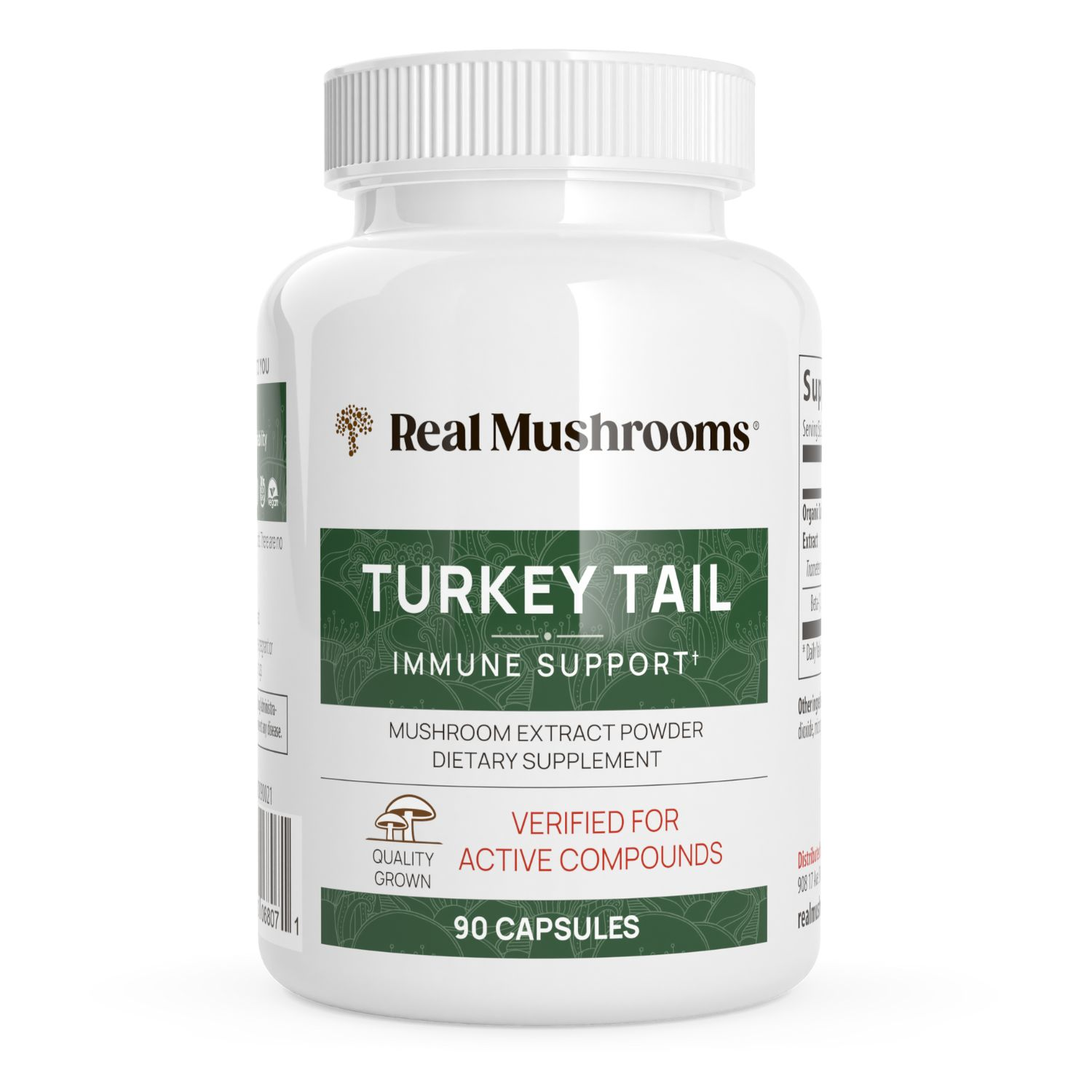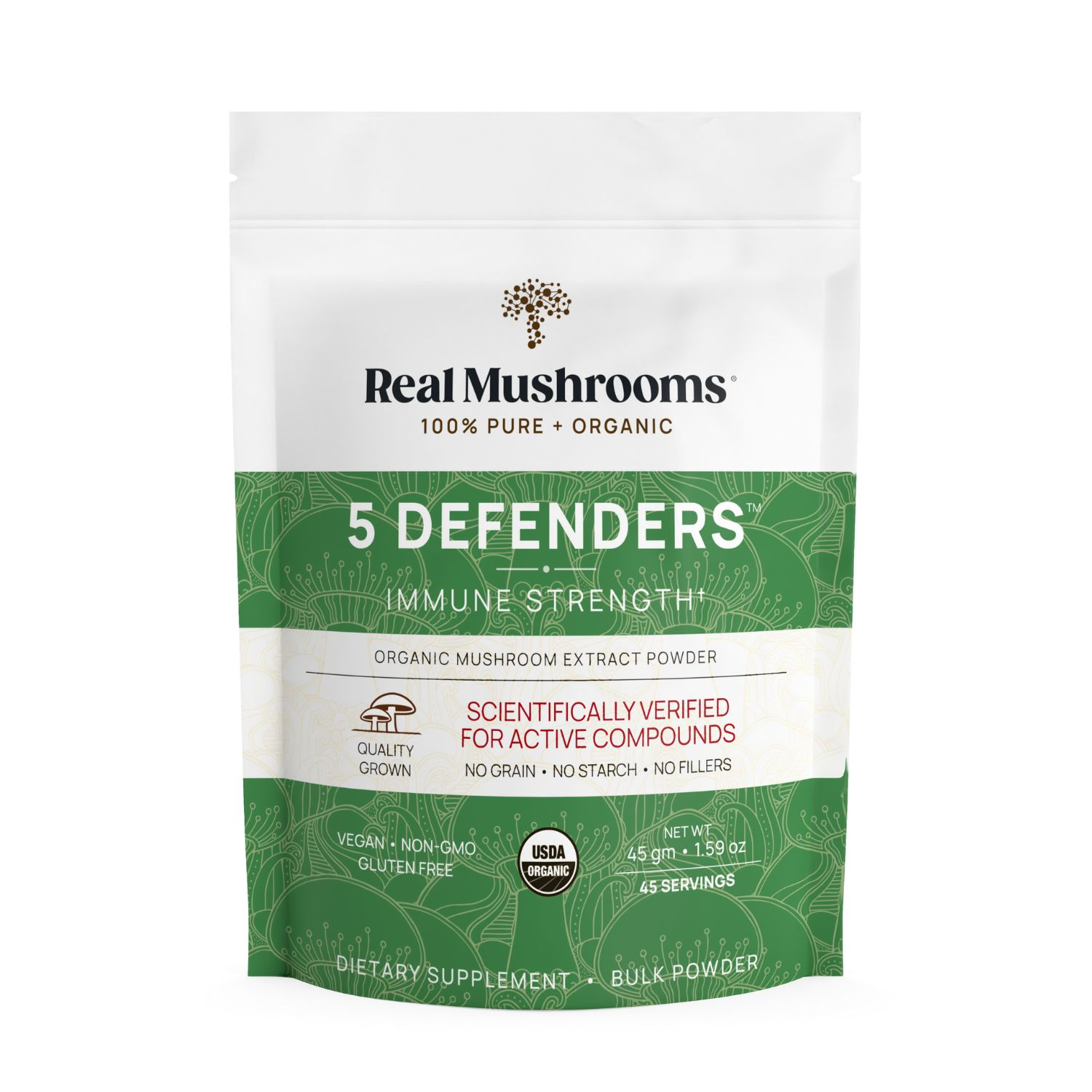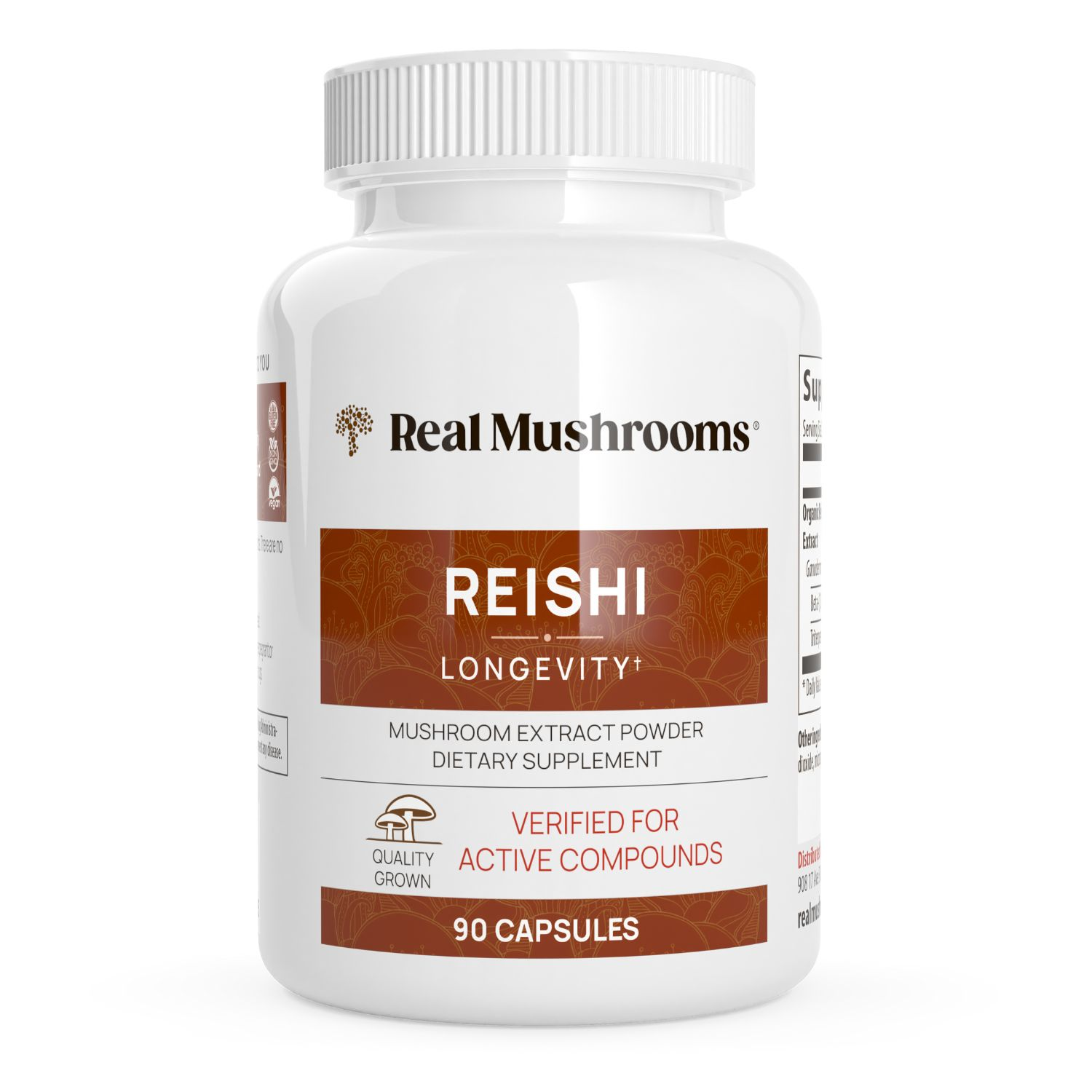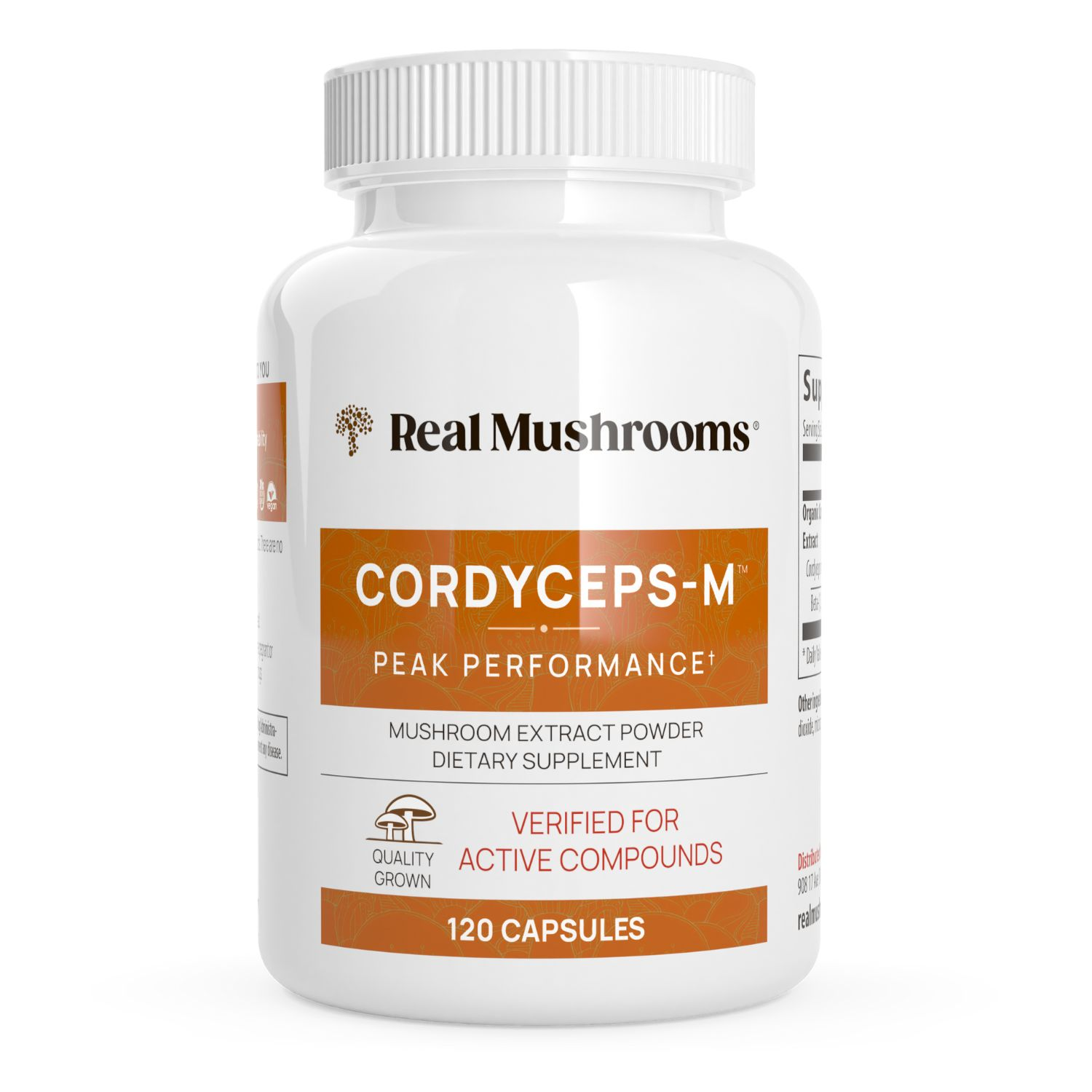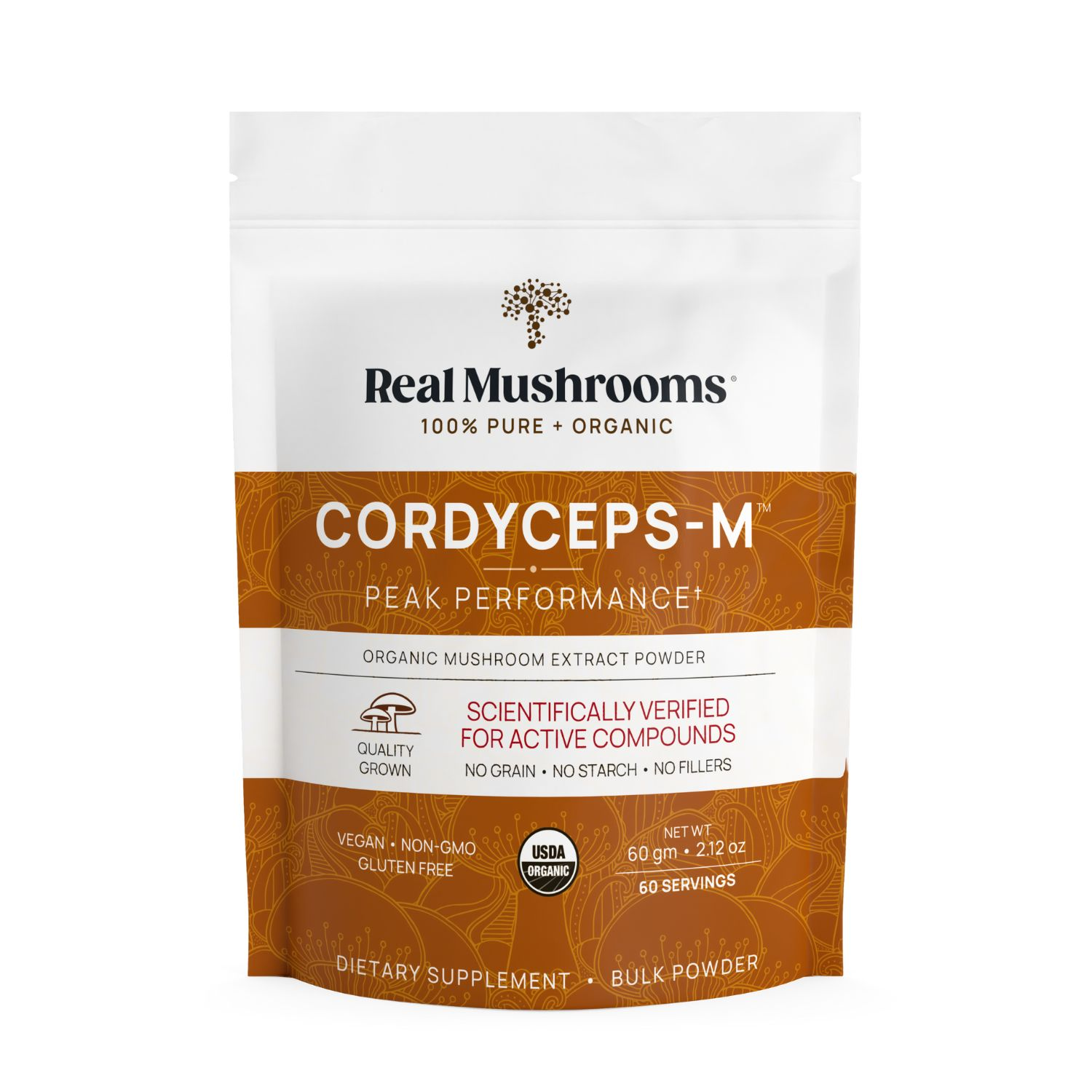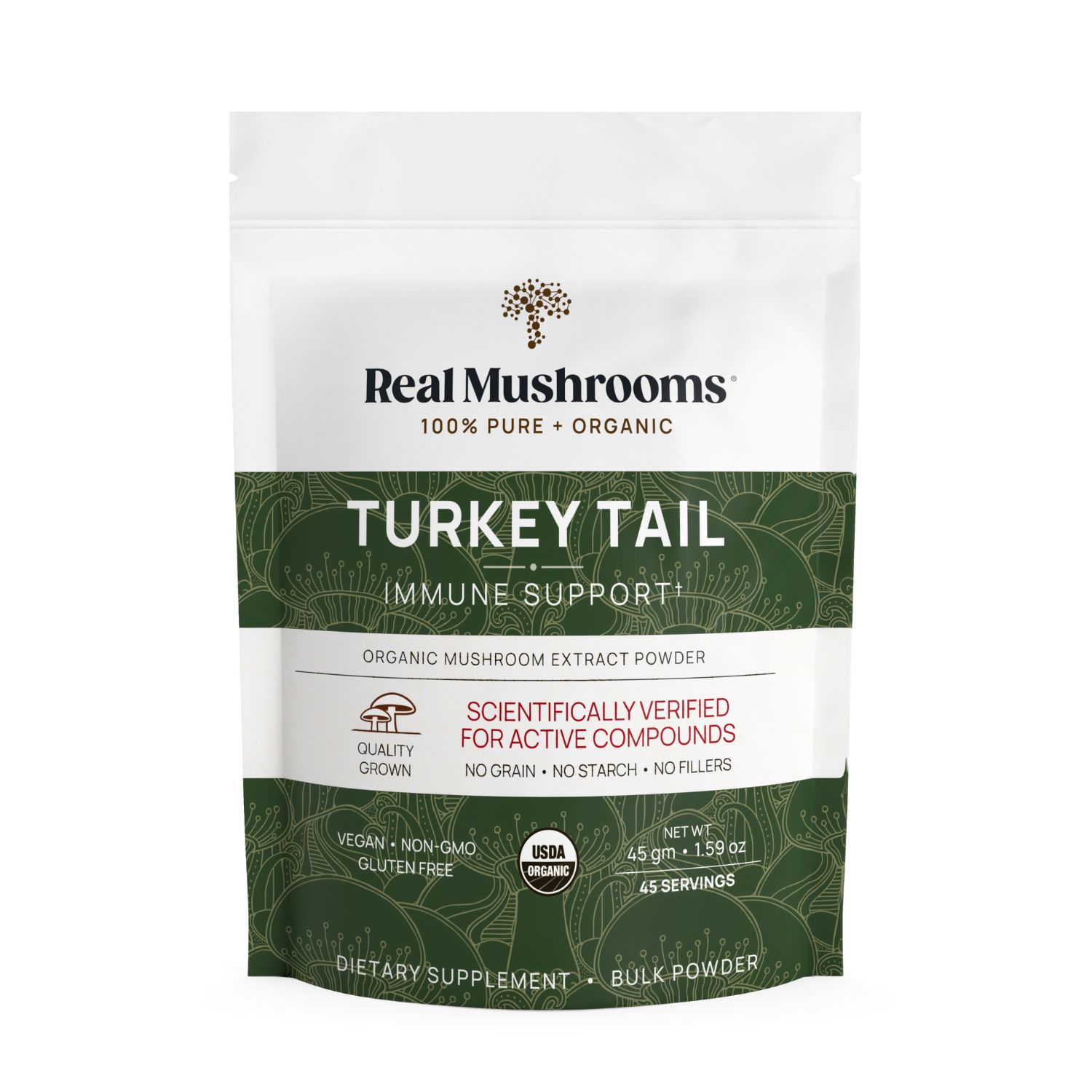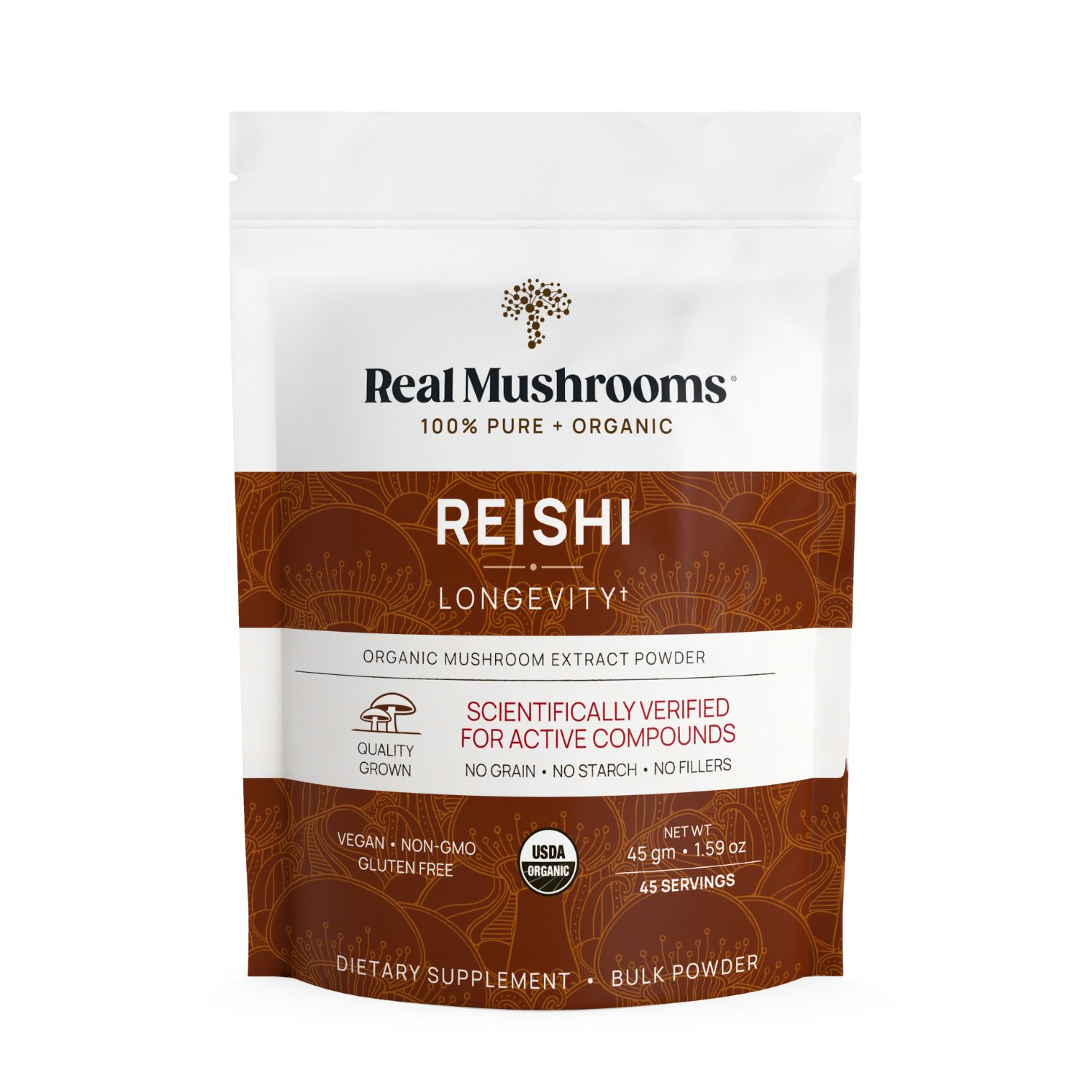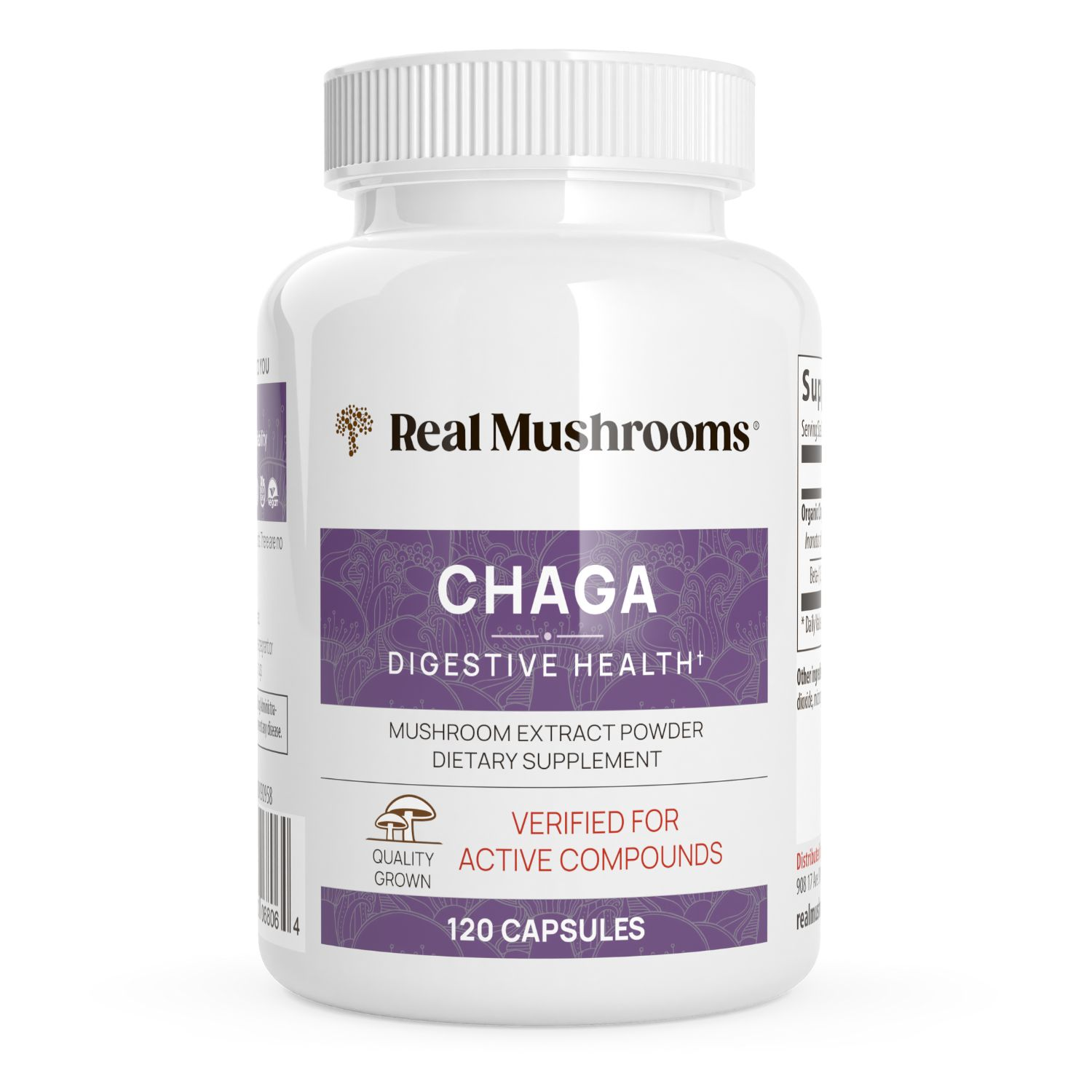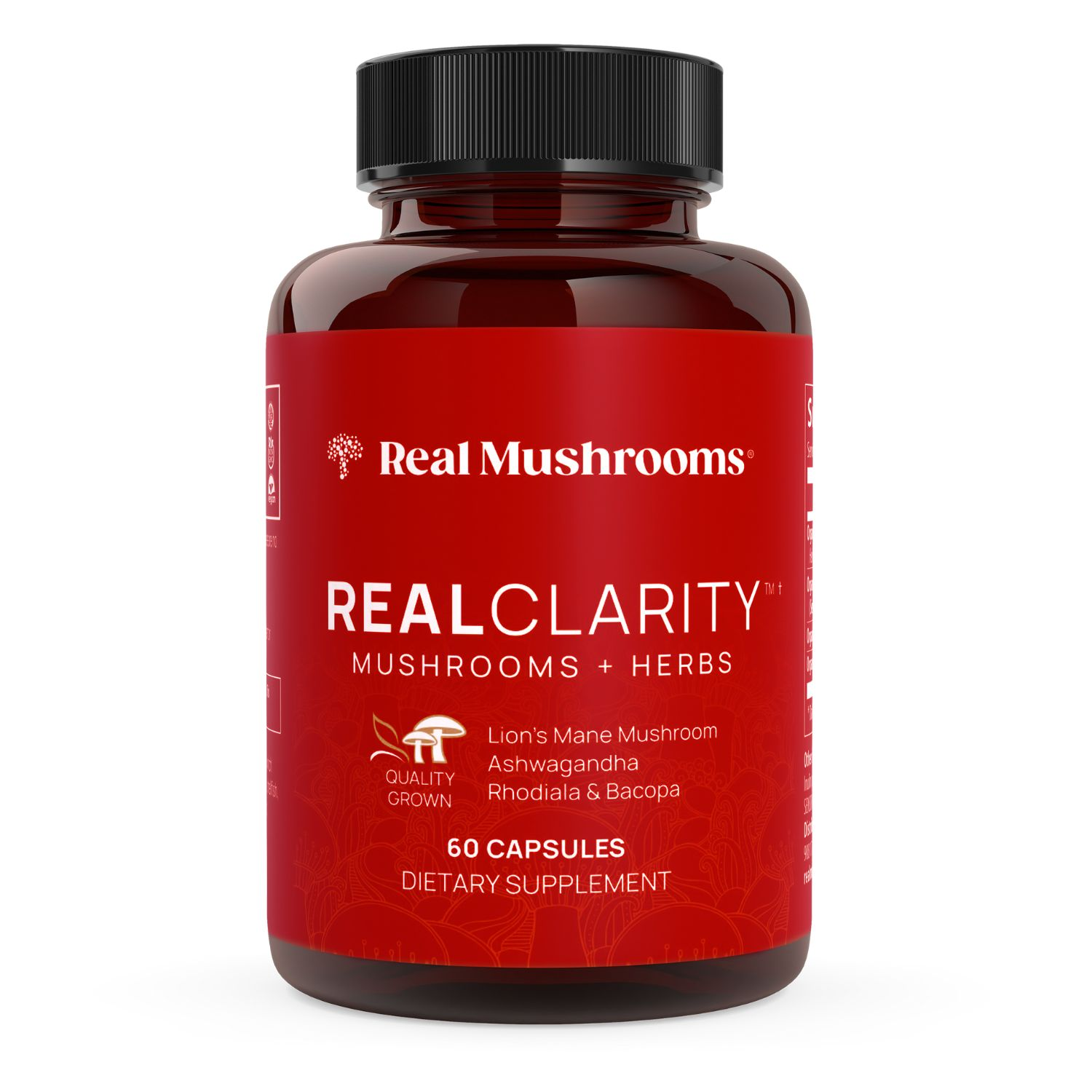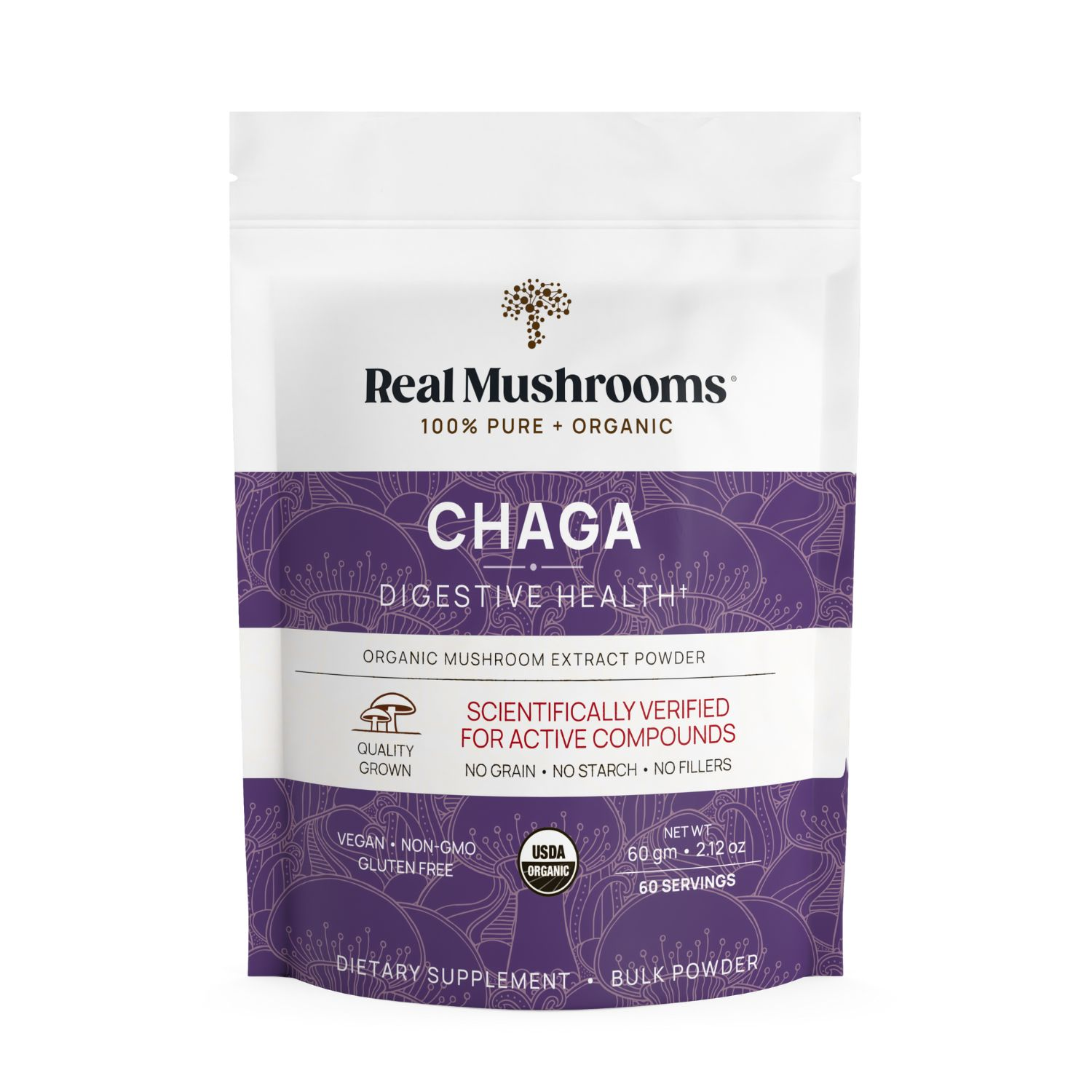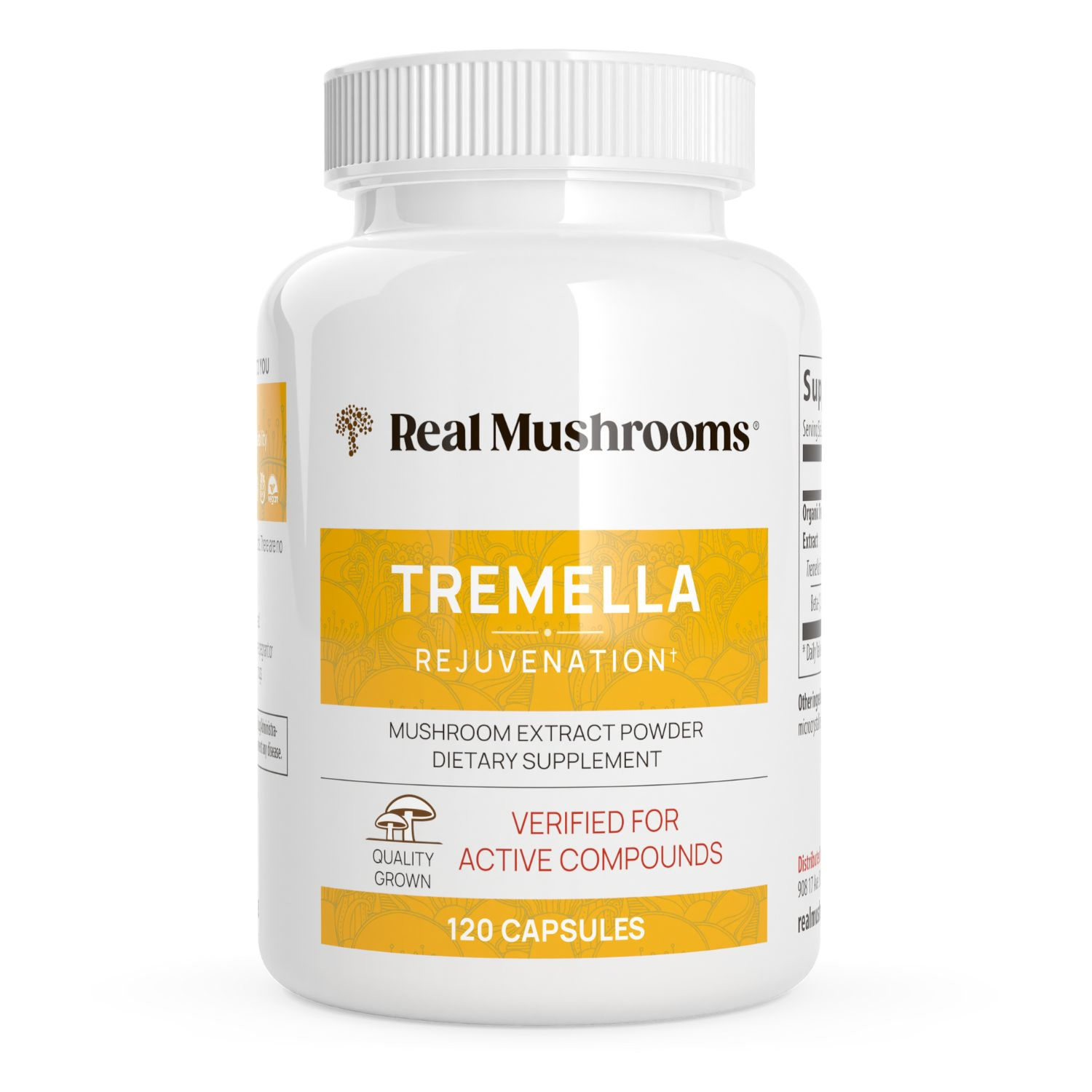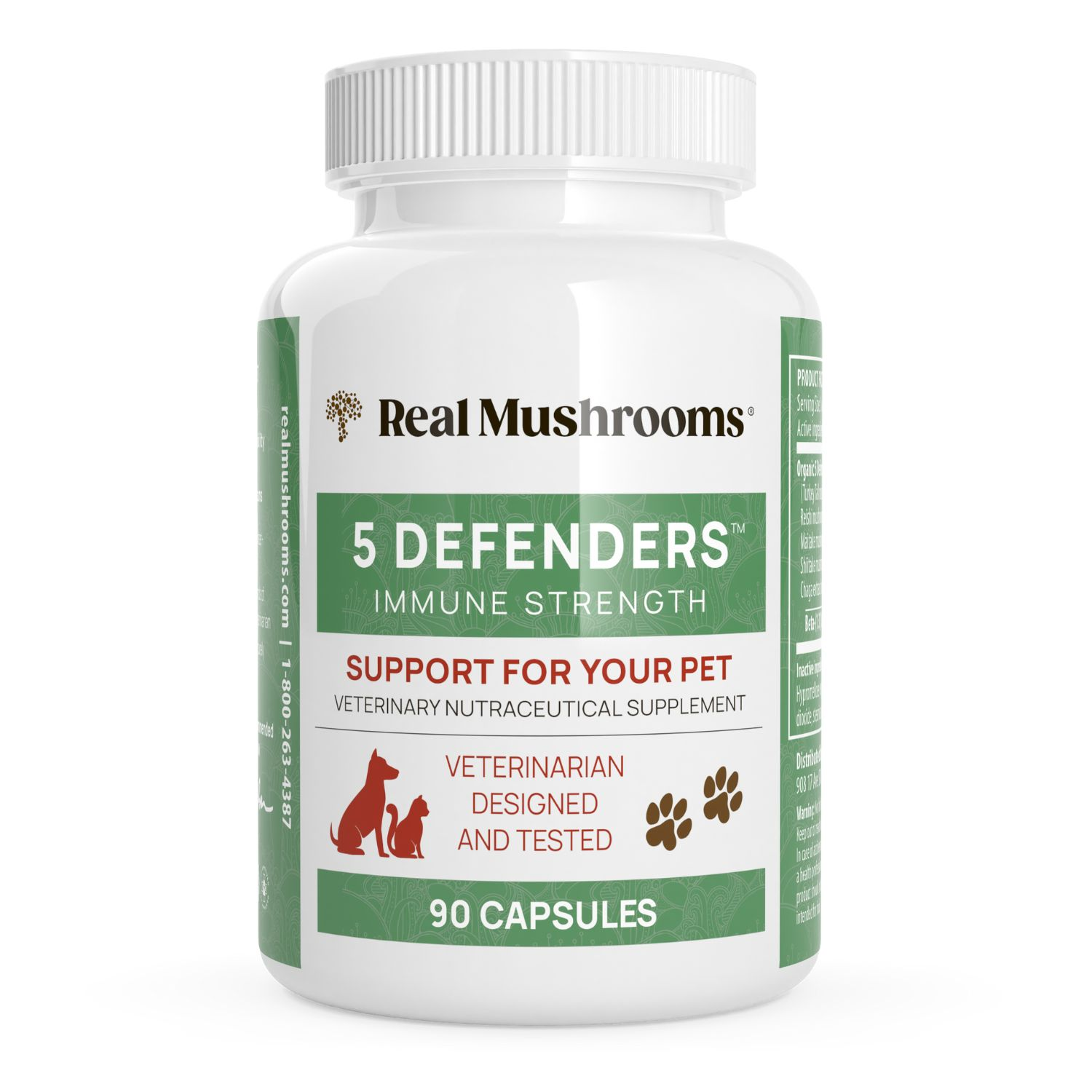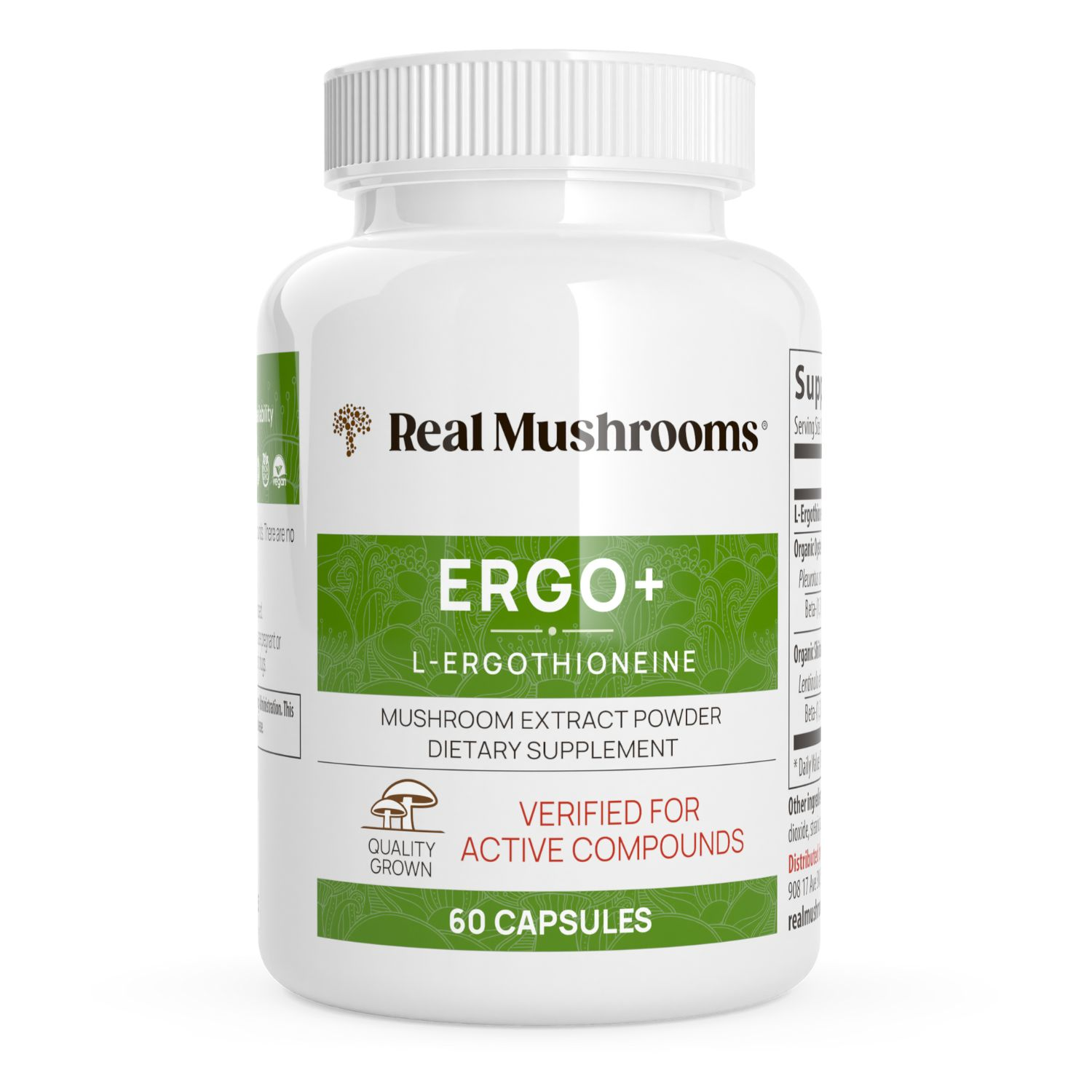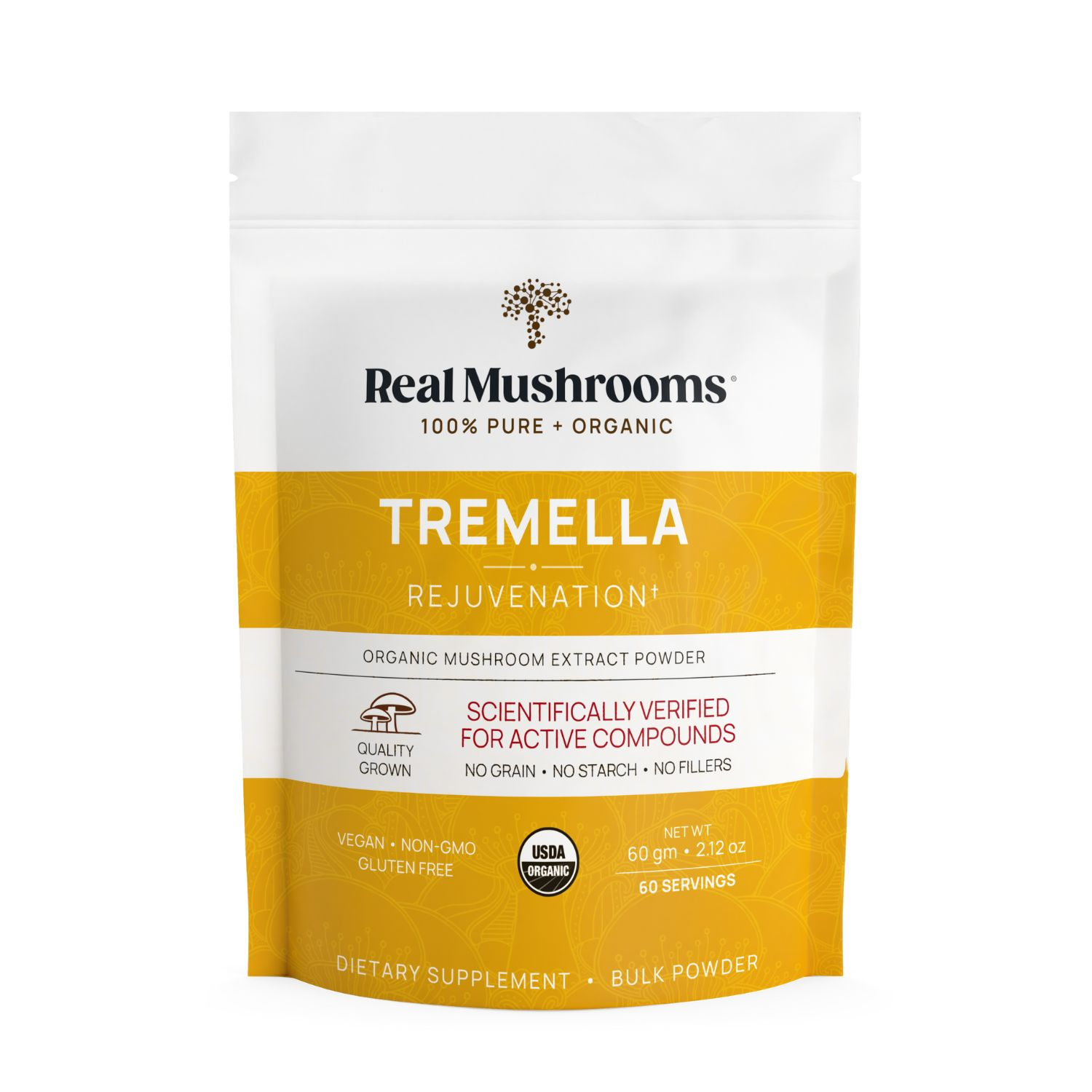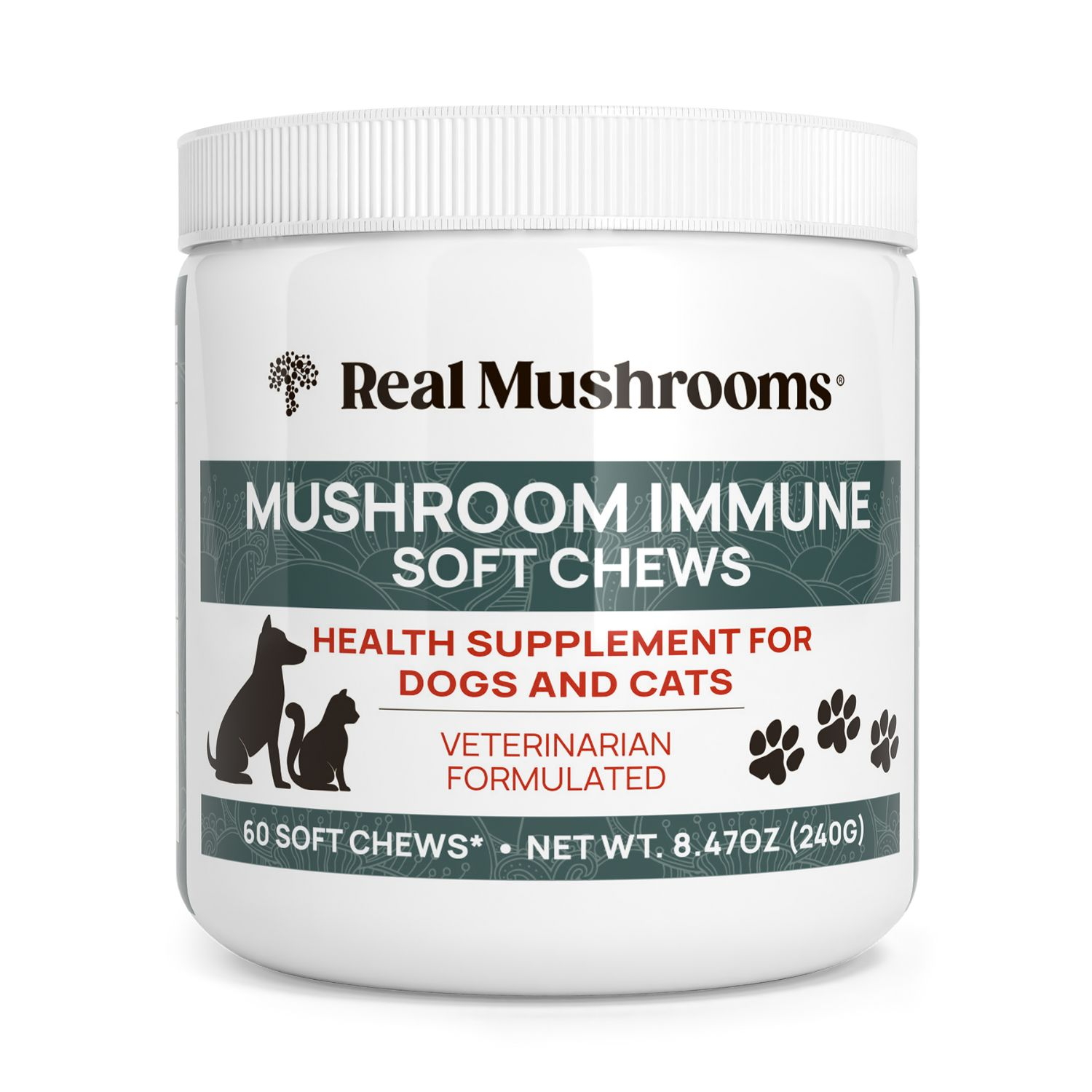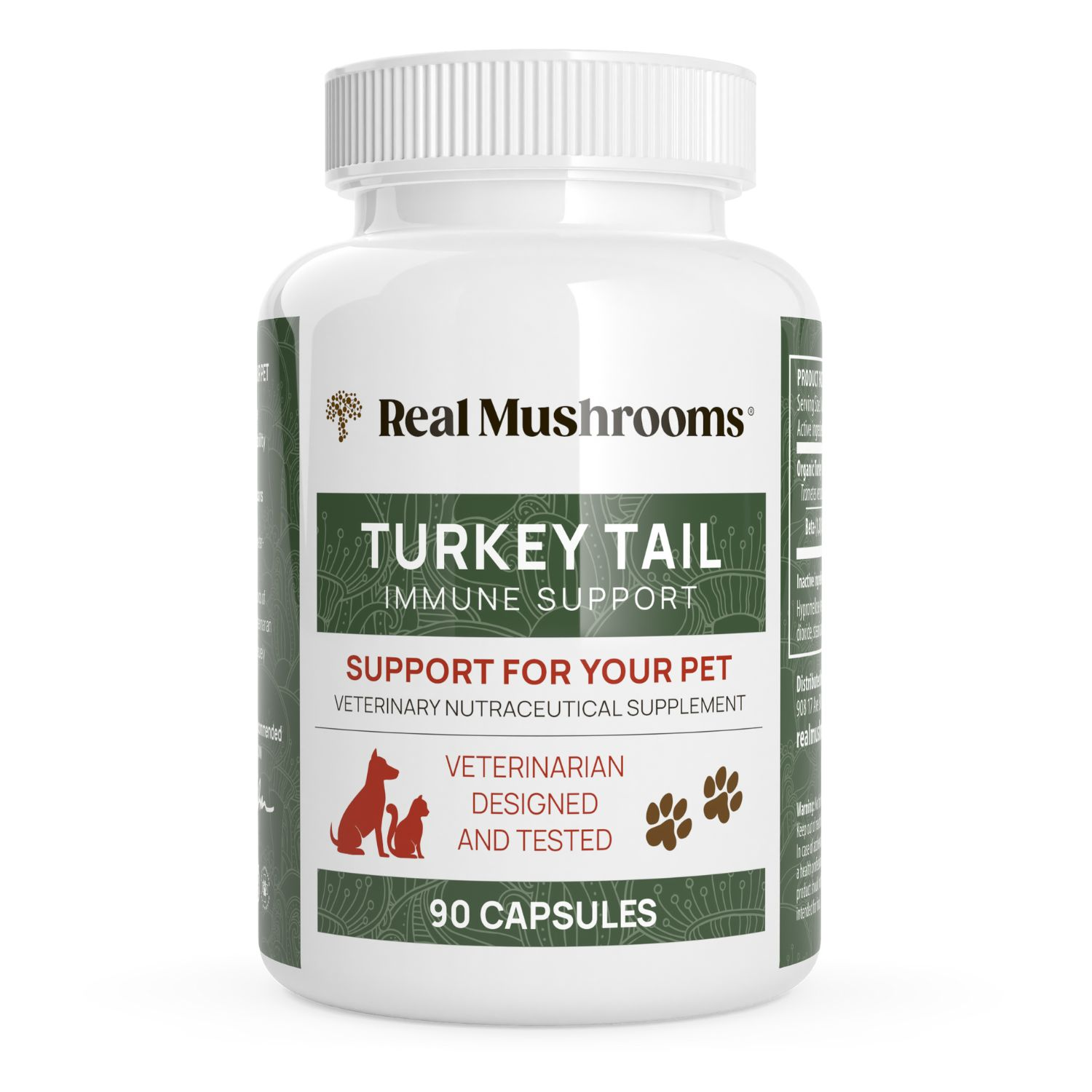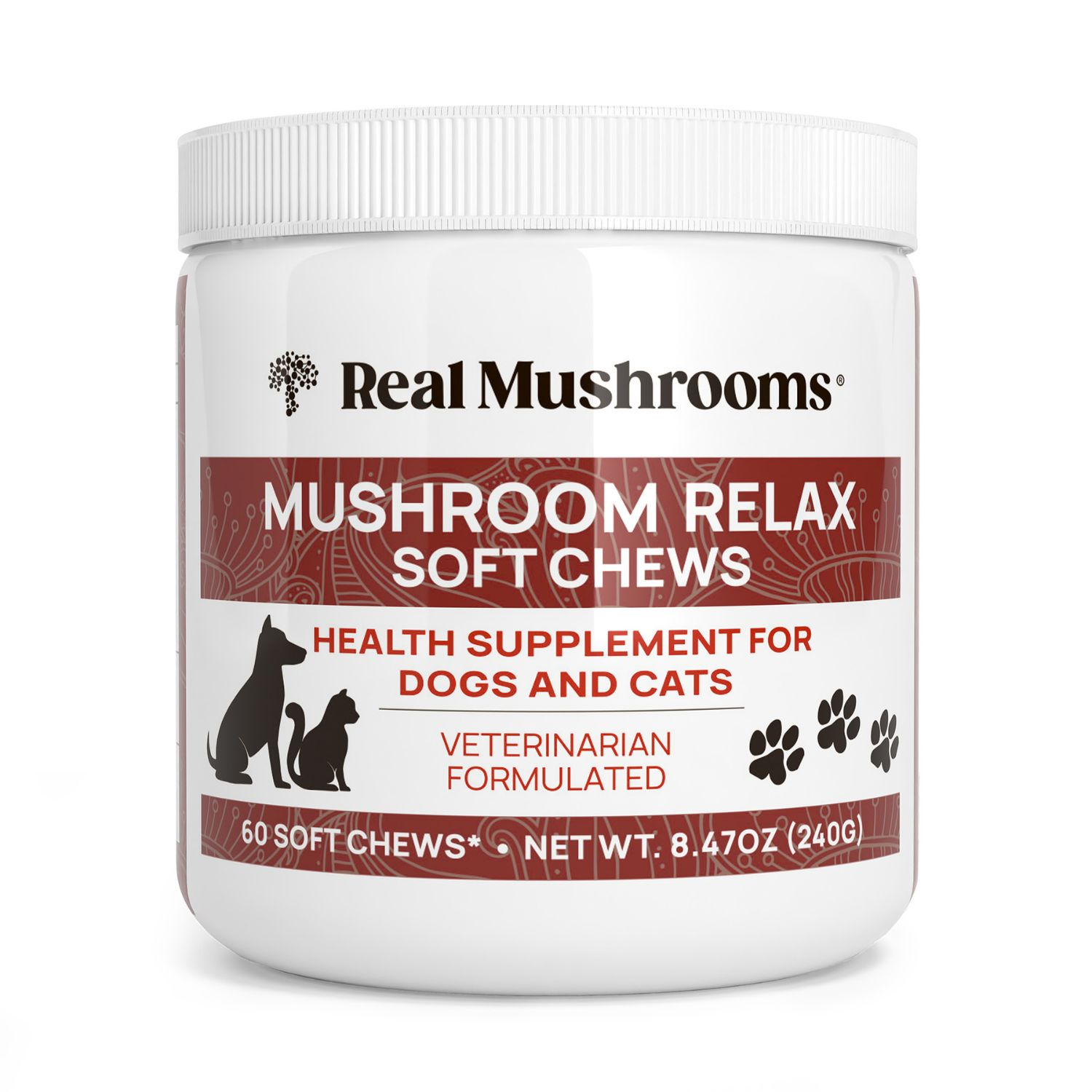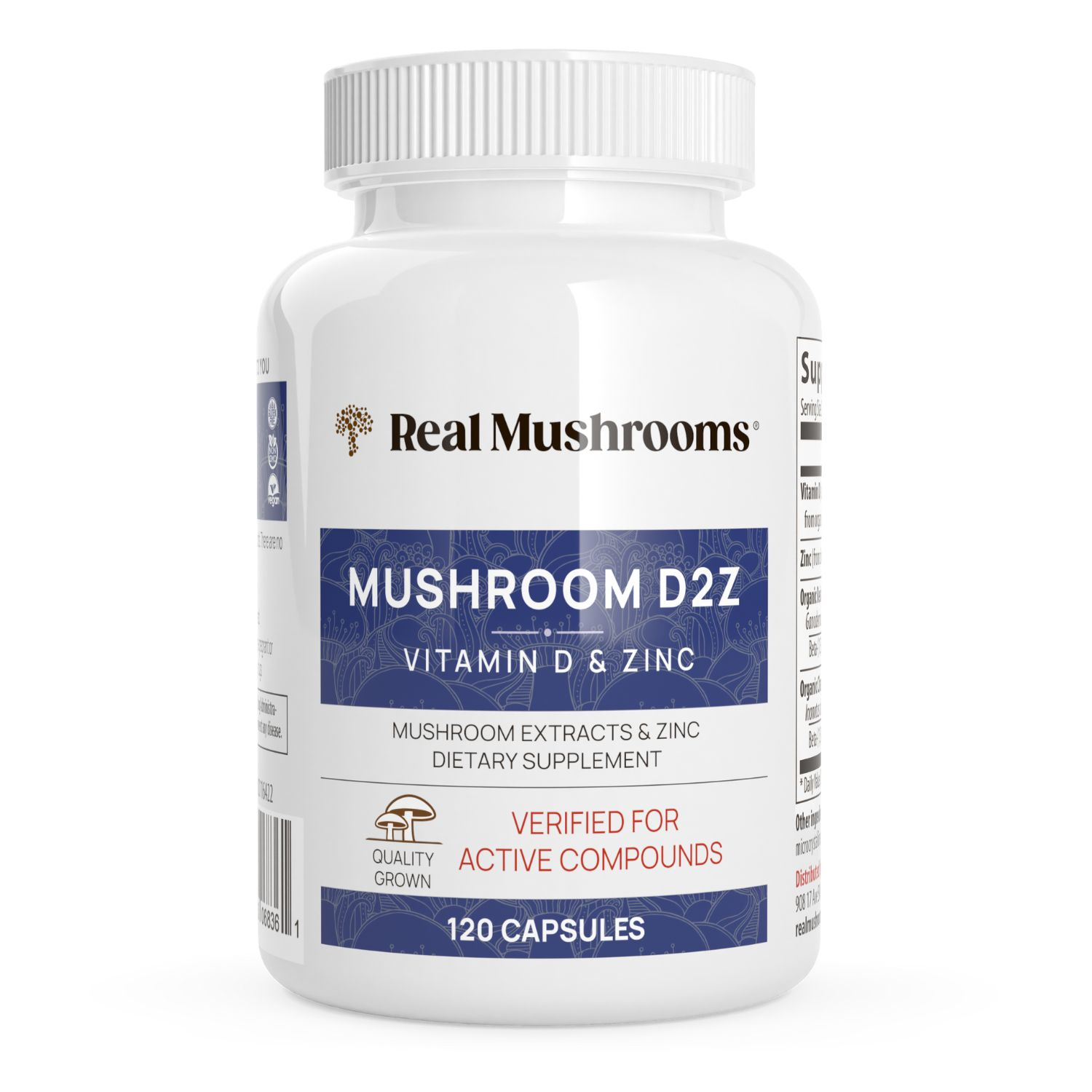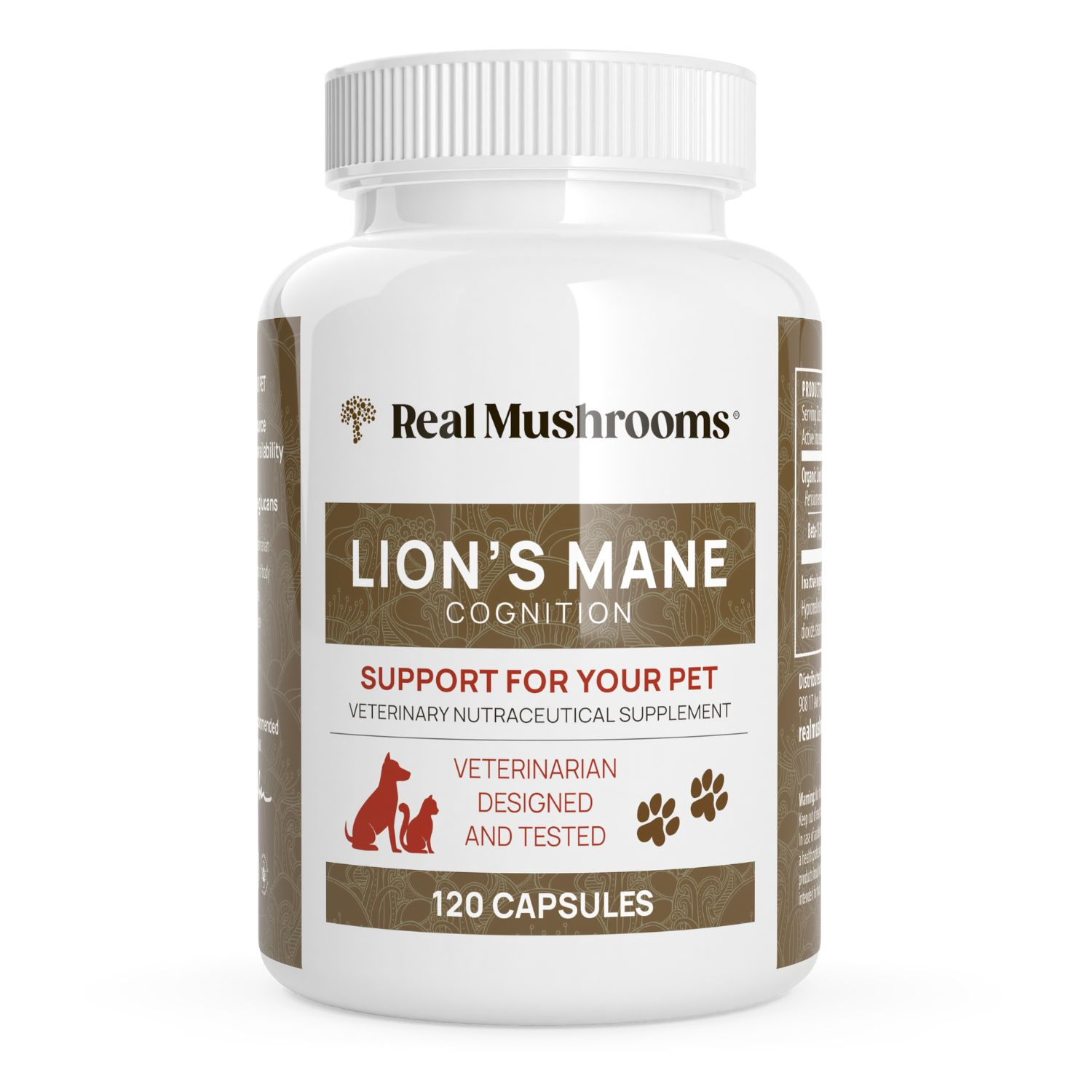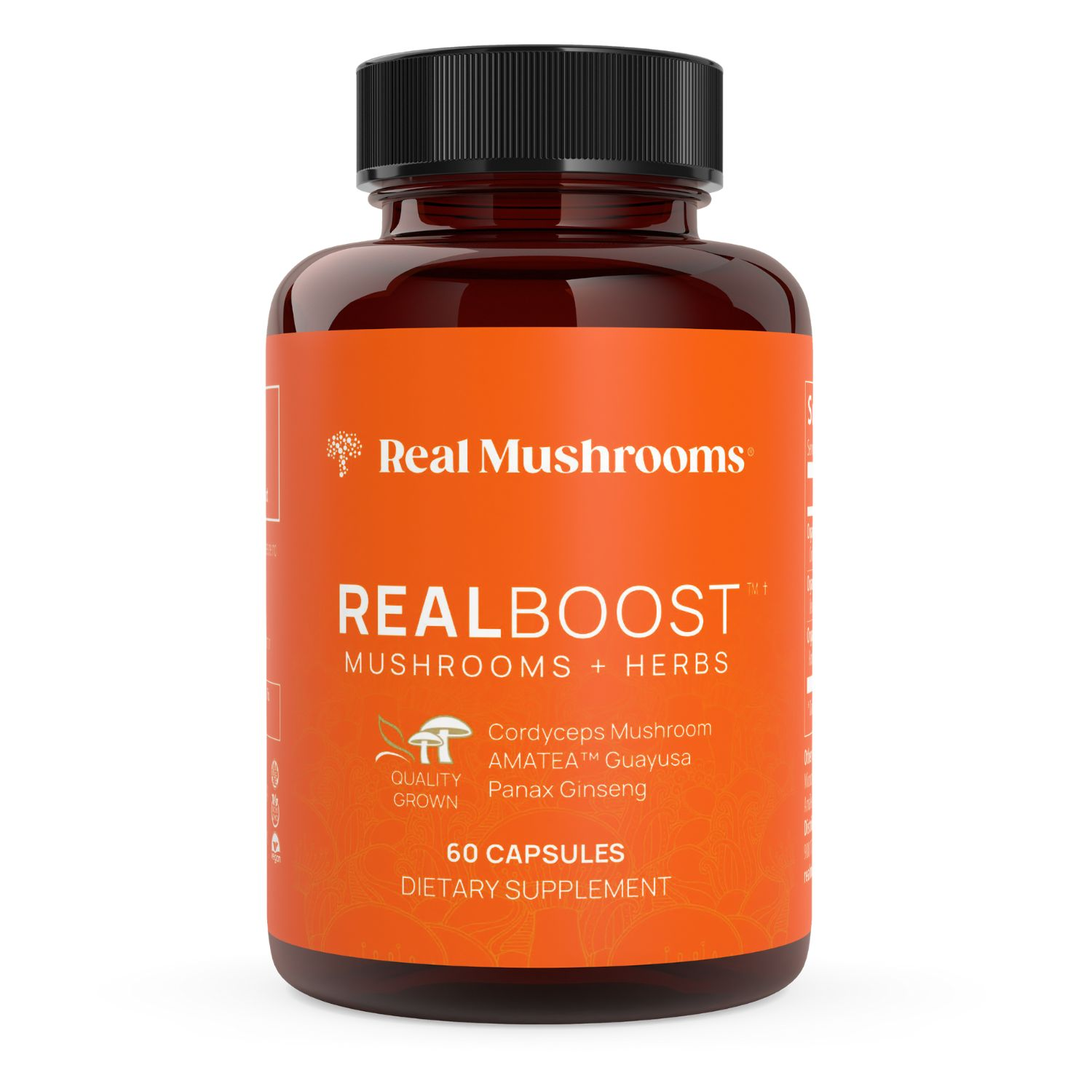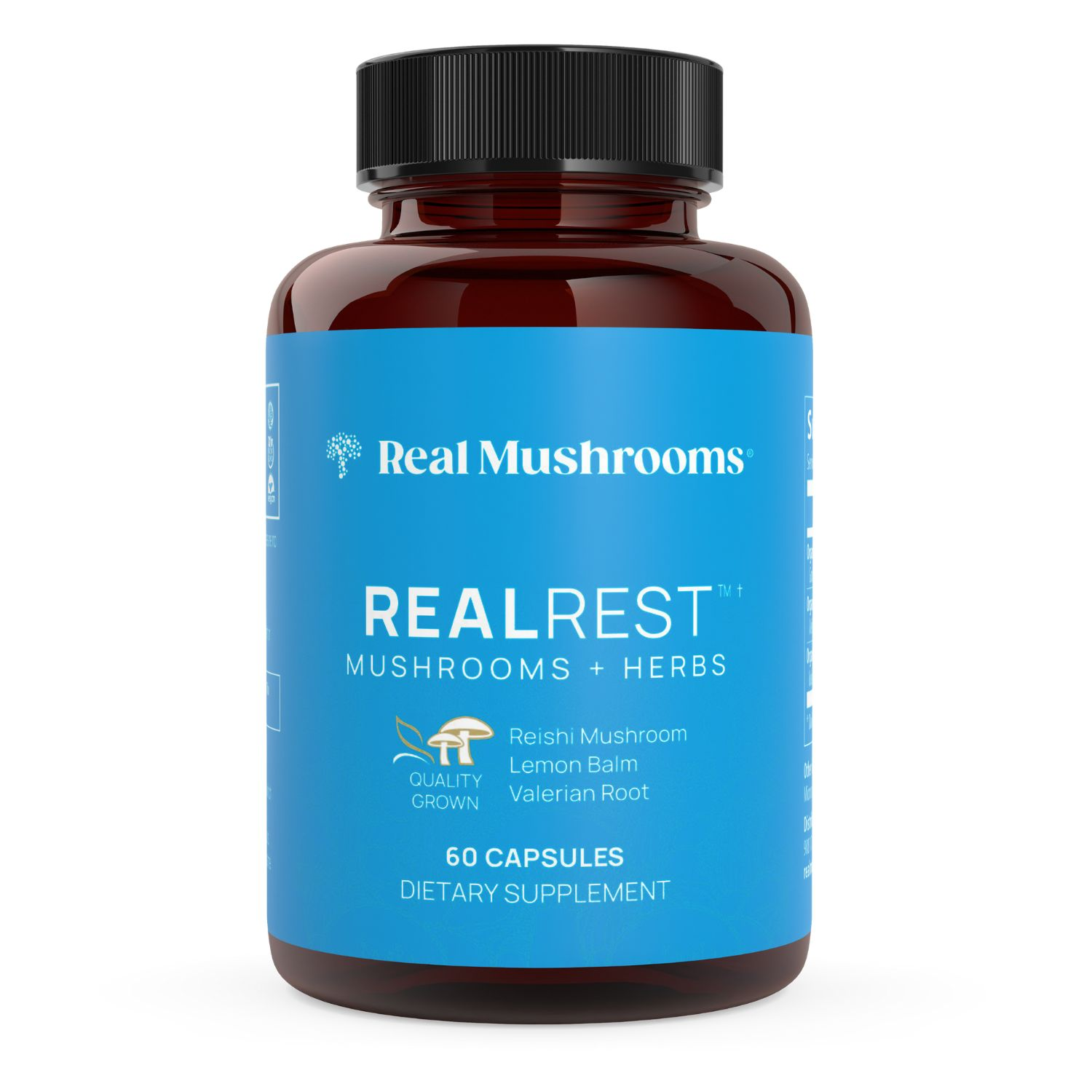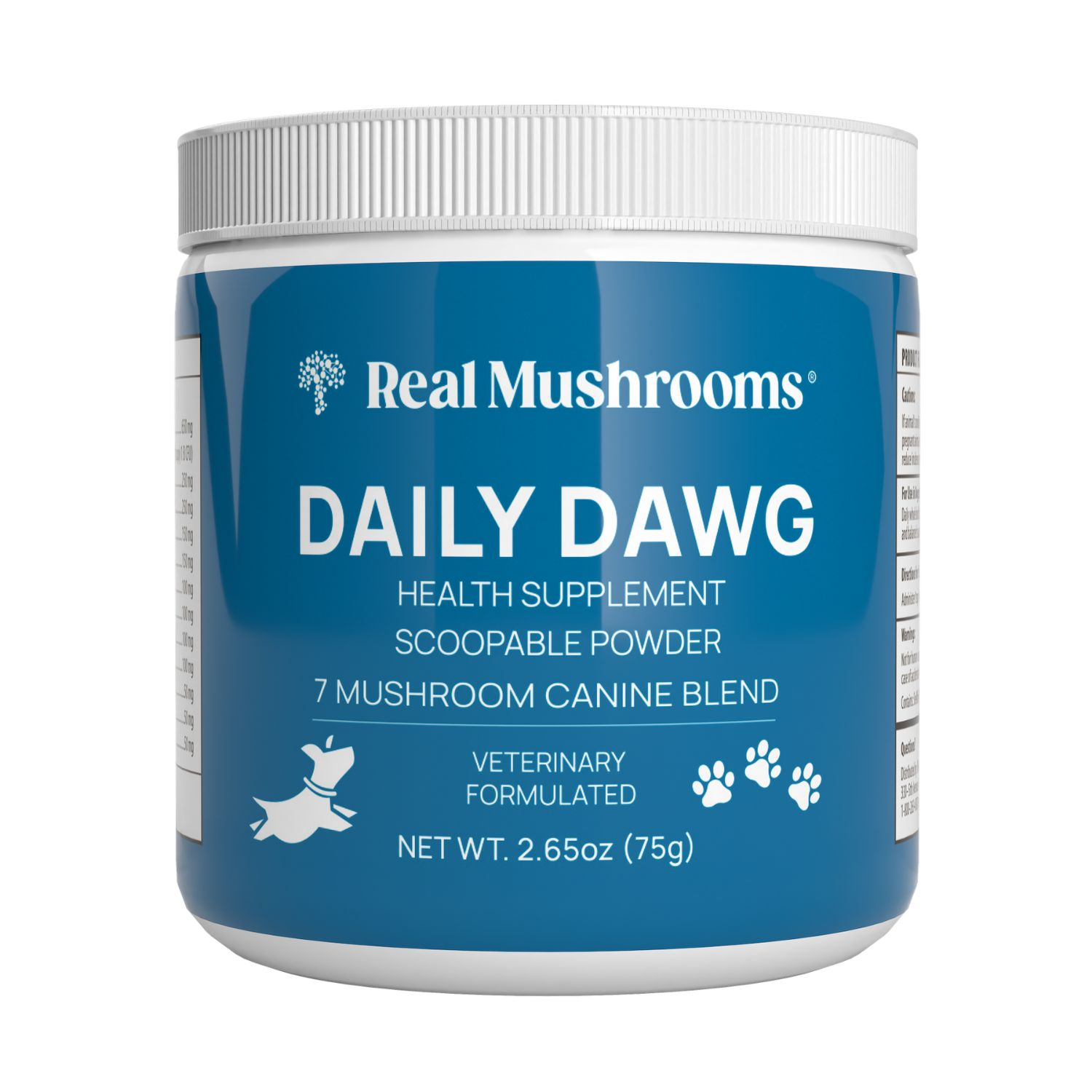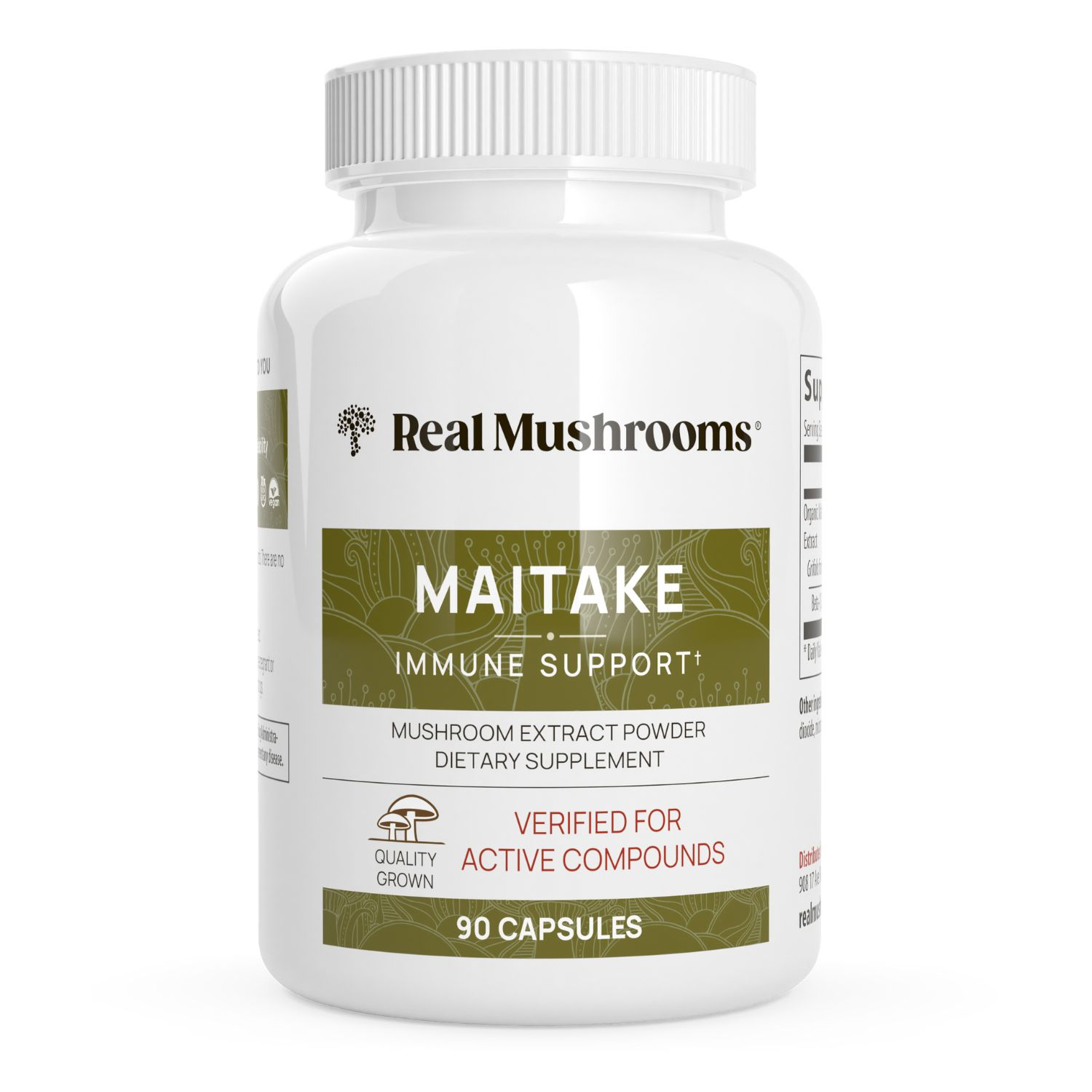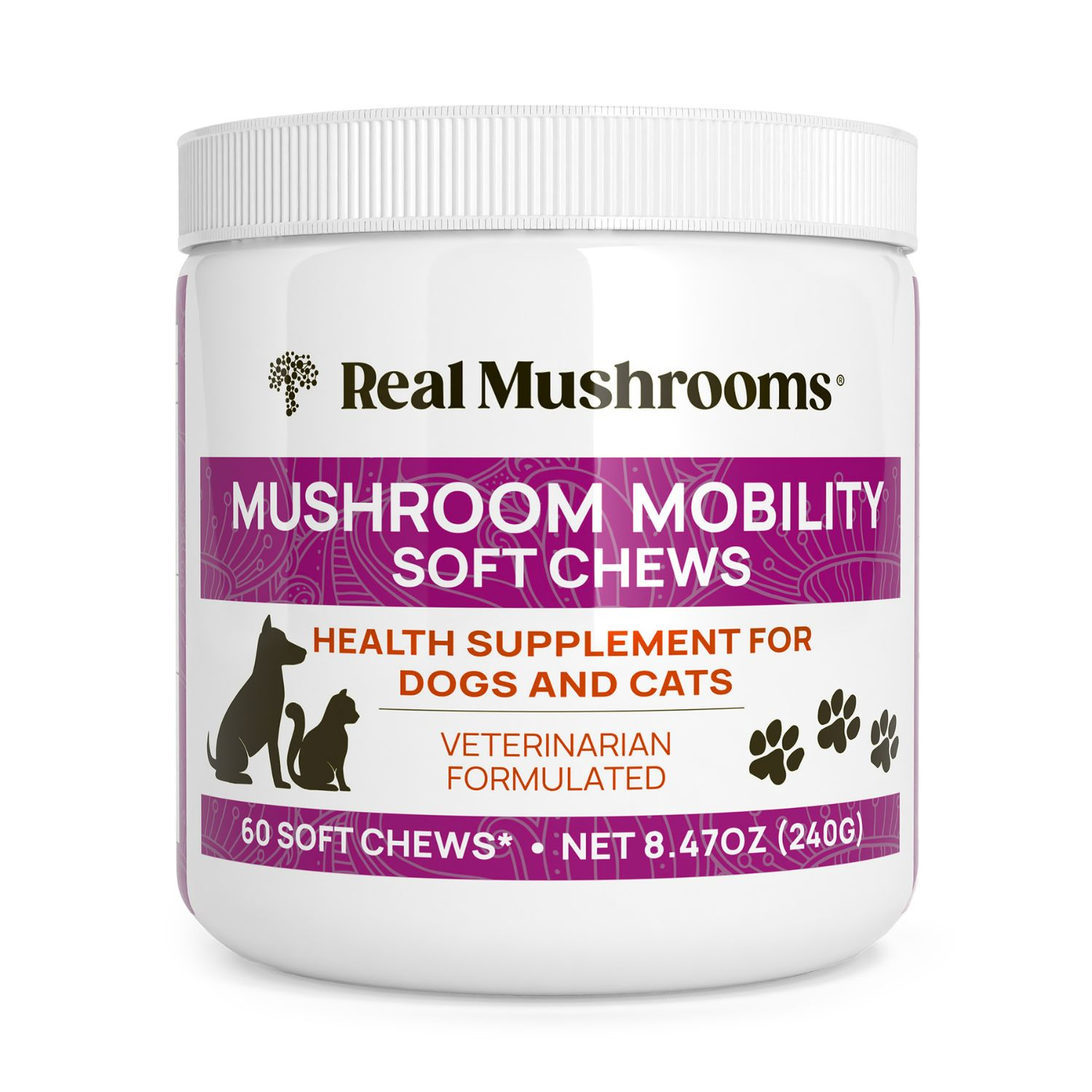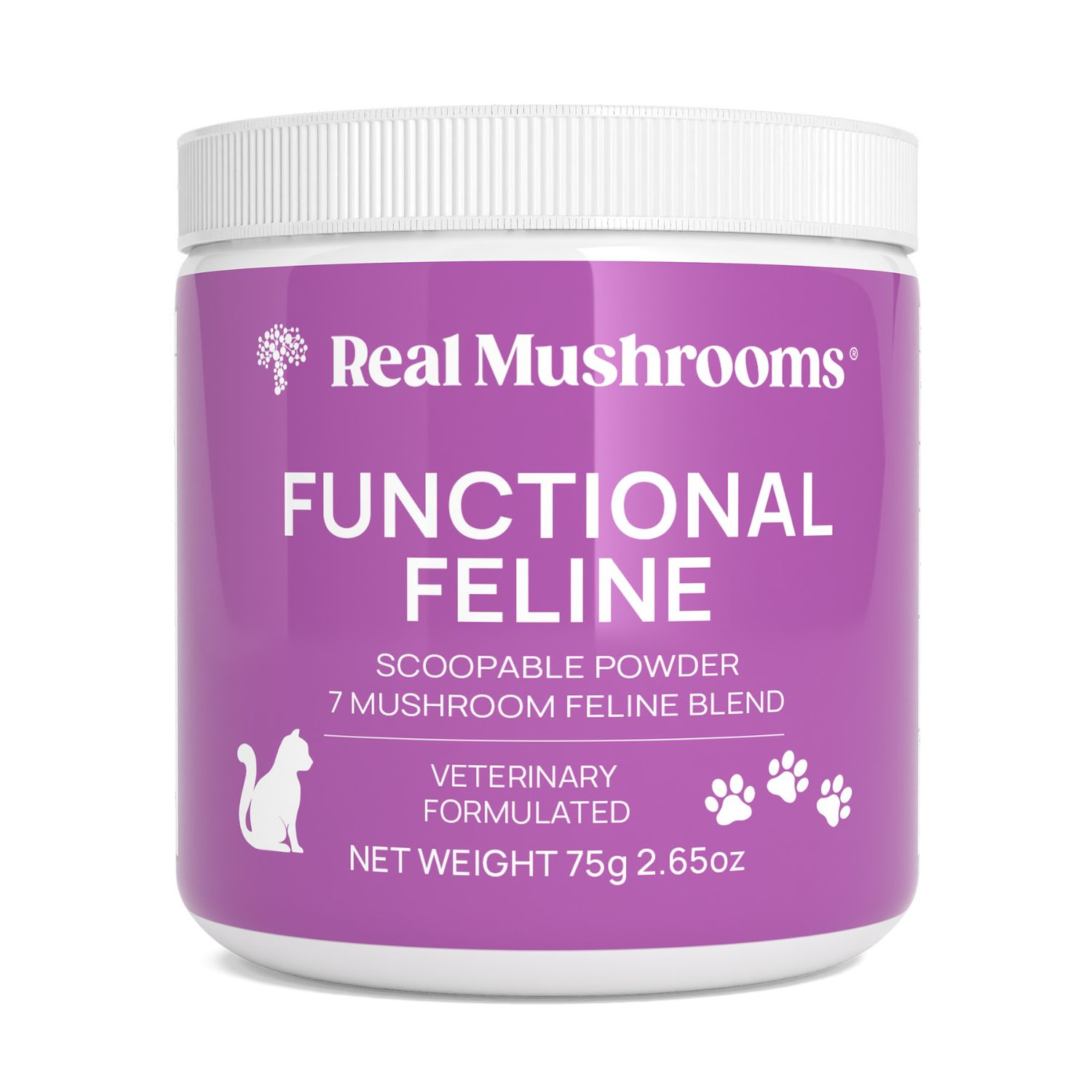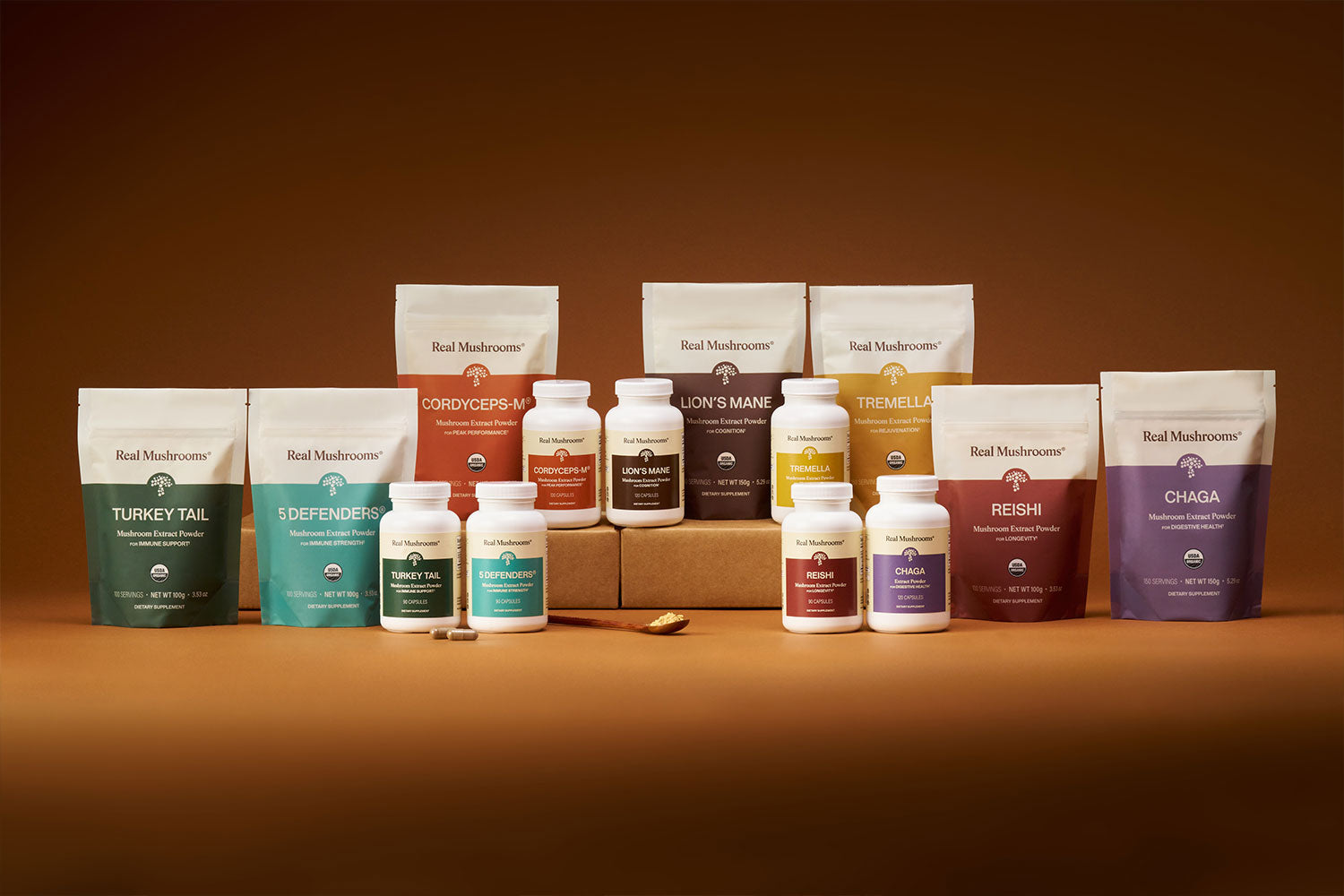Golden Oyster Mushrooms: A Taste of the Exotic
12 minute read

Golden oyster mushrooms, scientifically known as Pleurotus citrinopileatus, are a stunning and delectable variety of oyster mushrooms with a funnel-like shape. They can be cooked or taken as a mushroom extract powder supplement.
Their bright golden caps have a velvety/spongy texture when raw, which develops into a chewy texture with a delicate and savory flavor when cooked. They offer a unique culinary experience that differentiates them from more common mushroom species.
Golden Oyster mushrooms also contain high levels of a unique antioxidant. Research is increasingly showing this amino acid has positive impacts on longevity and long-term cognitive health.
This article will explore the fascinating world of golden oyster mushrooms, including their origin, appearance, health, and nutritional benefits.
What Are Golden Oyster Mushrooms?

Origin
Golden oyster mushrooms are native to the subtropical and tropical regions of Asia, particularly in countries like Japan, China, and Russia (1). These mushrooms have been a part of Asian cuisine for centuries, prized for their vibrant color and delicate flavor.
Wild populations of golden oyster mushrooms grow naturally on decaying wood on trees like oak, beech, and poplar, usually found in hardwood forests (2). They form tight clusters of bright yellow caps that are hard to miss in the wild (2).
Thanks to its aesthetic appeal and culinary versatility, the mushroom species has gained popularity in Asia and other parts of the world.
The spread of these mushrooms to different regions can be attributed to both the natural dispersal of spores and the intentional cultivation by mushroom enthusiasts and commercial growers.
In traditional Asian cultures, golden oyster mushrooms were often foraged from wild populations and used in various dishes. Their popularity grew as people began to appreciate their unique flavor and texture, leading to efforts to cultivate them more systematically.
Today, golden oyster mushrooms are cultivated in many parts of the world—in a grow kit or mushroom farm—bringing their exotic taste to a global audience.
However, when refrigerated, they have a short shelf life of 2 days to a week, so if you get raw golden oyster mushrooms from grocery stores or farmer’s markets, ensure you check the harvest dates.
Did You Know? Golden oyster mushrooms have a spicy and bitter taste when raw, but their taste transforms into a delightful nutty flavor when cooked.
Cultural Significance of Golden Oyster Mushrooms
Golden oyster mushrooms have cultural significance in various parts of the world, particularly in Asian countries where they have been used in traditional cuisine and health support practices for centuries.
In Japan, for example, these mushrooms are known as "tamogitake" and are often used in dishes like miso soup and tempura. They are also valued for their health-supporting properties and are used in traditional Chinese medicine to treat various ailments.
In traditional Chinese medicine, golden oyster mushrooms are believed to have properties that can strengthen the body's vital energy, improve digestion, and boost the immune system. They are often used in herbal formulas and soups to promote health and well-being.
The use of mushrooms in traditional medicine highlights their importance beyond just culinary applications, showcasing their role in holistic health practices.
The vibrant yellow color of golden oyster mushrooms also holds cultural significance. In many cultures, yellow is associated with prosperity, happiness, and good fortune. The bright color of these mushrooms can make dishes more visually appealing and symbolically significant, especially during festive occasions and celebrations.

Mushroom Species Appearance
Golden oyster mushrooms are known for their vibrant, golden-yellow caps. These mushrooms typically have a funnel-shaped cap that ranges from 2 to 6.5cm wide (3). The caps are smooth and slightly convex, bright golden to yellow-brown when young, and gradually become almost whitish and flatter in shape as they mature.
The gills underneath the cap are closely spaced and run down the stem, giving them a delicate and intricate appearance. The stems are usually short and often grow in clusters, making them easy to harvest and use in cooking.
Here are some key characteristics to help you identify golden oyster mushrooms:
- Color: Bright golden-yellow, which can fade slightly as the mushroom ages.
- Size: Caps range from 2 to 6.5cm in width.
- Shape: Funnel-like shape with a smooth, slightly convex surface when young.
- Gills: Closely spaced and running down the stem. Each gill has a white spore print like other mushrooms, such as Lion’s Mane.
- Growth Pattern: Often found growing in tight clusters.
Golden oyster mushrooms are not just visually appealing; they also offer a unique texture. The caps are tender and slightly chewy, while the stems are more fibrous. This combination makes them versatile in various culinary applications, from adding them to a side dish or stir-fries to soups.
Environmental Impact
Cultivating golden oyster mushrooms can have positive environmental impacts. These mushrooms can be grown on agricultural waste products like straw and sawdust, helping to recycle and reduce waste. By using these substrates, mushroom cultivation can contribute to sustainable farming practices and minimize the environmental footprint of agriculture.
Additionally, golden oyster mushrooms can be grown without harmful pesticides or chemicals, making them an eco-friendly choice. Their cultivation can promote biodiversity and support sustainable food systems. The mushrooms' ability to break down organic matter and recycle nutrients back into the soil further enhances their environmental benefits.
Mushroom cultivation also has a lower carbon footprint compared to traditional livestock farming (4). Mushrooms require less water, land, and energy to produce, making them a more sustainable and environmentally friendly protein source. Therefore, Incorporating umami-dense mushrooms like golden oysters into diets as a meat substitute can help reduce the overall environmental impact of food production.
Eco Insight: A 2017 study of one-third of the US mushroom industry calculated that the production of a pound of mushrooms requires only 1.8 gallons of water (compared to 500+ gallons for beer or 200+ gallons for soy), 1 kWh of energy and generates only 7 pounds of CO2 equivalent (5).
How to Grow Golden Oyster Mushrooms

Can you grow golden oyster mushrooms at home?
Growing tight clusters of golden oyster mushrooms at home can be a rewarding and fun experience, especially for those who love gardening or cooking with fresh ingredients.
You don’t need a green thumb or much space to grow golden oyster mushrooms at home. Below is a simple guide to get you started.
- Choose Your Growing Medium: Golden oyster mushrooms thrive on a variety of substrates, such as straw, sawdust, or even coffee grounds. You can easily find a pre-made mushroom grow kit with everything you need.
- Find the Right Spot: These mushrooms prefer a warm, humid environment with indirect light. A basement, garage, or even a closet can be an ideal spot.
- Maintain Humidity: Golden oyster mushrooms need a humid environment to grow. You can achieve this by misting the farm area or grow kit regularly or using a humidity tent.
When they are ready for harvest, put them in a paper bag with air holes and store them in the refrigerator.
What are the ideal growing conditions?
Growing golden oyster mushrooms can be a rewarding experience, especially when you know the right conditions to help them thrive.
Temperature and Humidity
Golden oyster mushrooms prefer a warm and humid environment. The ideal temperature range for growing these mushrooms is between 25°C to 29°C. They thrive in high humidity, around 60% to 75%, which mimics their natural habitat (6).
If you live in a dry area, consider using a humidifier or misting the growing area regularly to maintain the necessary moisture levels.
Light
While golden oyster mushrooms (Pleurotus citrinopileatus) don’t need direct sunlight, they do require some light to grow properly. Indirect light or a low-intensity grow light works best. Aim for about 12 hours of light daily to keep your mushrooms happy and healthy.
Substrate
The substrate is the material on which mushrooms grow, and straw or sawdust works wonders for golden oyster mushrooms. These materials provide the nutrients and structure that the mushrooms need to develop.
You can also use a mix of both for optimal results. Ensure the substrate is pasteurized to eliminate unwanted bacteria or fungi that could compete with your mushrooms.
Airflow
Good airflow is crucial for preventing the buildup of carbon dioxide, which can hinder mushroom growth. Ensure your growing area is well-ventilated, but avoid strong drafts that could dry out the substrate. A small fan can help maintain gentle air circulation.
Watering
Keeping the substrate moist is key to successful mushroom cultivation. However, it’s important not to overwater, as this can lead to mold and other issues. A light misting once or twice a day is usually sufficient. The goal is to keep the substrate damp but not soggy.
By providing the right conditions, you can enjoy the beauty and benefits of golden oyster mushrooms right at home.
Patience is Key: The mushrooms usually take a few weeks to fully develop. During this time, monitor the moisture levels and ensure they are getting enough air circulation.
Growing Golden Oysters: Issues and Solutions
Golden oyster mushrooms, like any other crop, can be susceptible to various pests and diseases. Understanding these common issues can help you maintain a healthy and productive mushroom garden.
Common Pests
- Mushroom Flies: These tiny insects are attracted to the moist environment where mushrooms thrive. They can lay eggs in the substrate, leading to larvae that feed on the mushrooms.
- Mites: These microscopic pests can infest the growing medium and damage the mushrooms by feeding on their mycelium.
- Slugs and Snails: These creatures are particularly fond of the tender flesh of golden oyster mushrooms and can cause significant damage if not controlled.
Common Diseases
- Green Mold (Trichoderma): This is one of the most common fungal contaminants. It appears as green patches on the substrate and can quickly overtake the mushroom mycelium.
- Bacterial Blotch: This disease manifests as yellow to brown spots on the mushroom caps, often caused by high humidity and poor air circulation.
- Cobweb Mold: This mold appears as a fine, web-like growth on the substrate's surface and can spread rapidly if not addressed.
Prevention Tips
- Maintain Cleanliness: Always use clean tools and substrates to minimize the risk of contamination. Sterilize your growing medium before use.
- Monitor Humidity Levels: Keep humidity levels within the recommended range for golden oyster mushrooms. Excessive moisture can promote the growth of mold and bacteria.
- Regular Inspections: Frequently check your mushroom garden for signs of pests or diseases. Early detection can help you take swift action to mitigate the problem.
- Natural Predators: Introduce natural predators like predatory mites to control pest populations without the use of chemicals.
- Proper Ventilation: Ensure good air circulation in your growing area to prevent excess moisture buildup and reduce the risk of bacterial infections.
You can enjoy a bountiful harvest of golden oyster mushrooms by staying vigilant and taking these preventive measures.
Nutritional Benefits
Organic golden oyster mushrooms are packed with a variety of nutrients that can benefit your health in numerous ways.
These exotic mushrooms are a fantastic addition to your diet, offering a range of vitamins, minerals, and other beneficial compounds. Golden oyster mushrooms are a source of several essential nutrients, making them a great choice for anyone looking to boost their nutritional intake.
Vitamins
Golden oyster mushrooms are particularly high in B vitamins, including B1 (thiamine), B2 (riboflavin), B3 (niacin), and B5 (pantothenic acid). These vitamins play crucial roles in supporting energy production, brain function, and maintaining healthy skin and eyes.
Below is a detailed look at the various B vitamins found in golden oyster mushrooms, their functions, and the recommended daily intake for men and women.

Protein
These mushrooms are a good source of protein, which can promote muscle repair and growth. They are particularly valuable for vegetarians and vegans looking to increase their protein intake, as the protein content in golden oyster mushrooms includes all essential amino acids.
Minerals
These mushrooms are also a source of essential minerals such as potassium, iron, and zinc. Potassium enhances circulation, iron can help blood oxygen transport, and zinc can support immune function and wound healing.
Fiber
With a decent amount of dietary fiber, golden oyster mushrooms can aid in digestion and help maintain a healthy gut. Fiber is also beneficial for maintaining blood sugar levels.
Antioxidants
Golden oyster mushrooms contain antioxidants like ergothioneine and glutathione, which can help protect your cells from damage caused by free radicals.
When it comes to quality, Real Mushrooms truly stands out. We prioritize purity and potency, ensuring you receive the maximum health benefits from our products. Our Ergo+ Ergothioneine Supplement is packed with a high concentration of ergothioneine to support your overall well-being.
Fun Fact: Ergothioneine, often called the "longevity vitamin," is notable for its potential health benefits, particularly in helping protect cells from oxidative damage and supporting overall cellular health. Found primarily in mushrooms, this essential nutrient is believed to reduce the risk of chronic conditions and promote healthy aging (7).

Health Benefits
In addition to their nutritional value, golden oyster mushrooms offer several health benefits that can enhance overall well-being:
Immune Support
The antioxidants and polysaccharides in golden oyster mushrooms can help boost the immune system. Polysaccharides, particularly beta-glucans, have been shown to stimulate immune cell activity and enhance the body's defense mechanisms (8).
Heart Health
These mushrooms are low in fat and cholesterol, making them heart-friendly. They also contain compounds that can help maintain blood pressure and cholesterol levels that are already within the normal range. The presence of potassium helps maintain proper heart function.
Healthy Inflammatory Response
Golden oyster mushrooms promote a healthy inflammation response, potentially benefiting conditions like arthritis. Chronic inflammation is linked to various conditions, and consuming food that supports healthy inflammatory responses can help mitigate these effects.
Inhibiting Abnormal Cell Growth
Plant research on the golden oyster mushroom by the International Journal of Medicinal Mushrooms suggests that the bioactive compounds in golden oyster mushrooms have properties that may help prevent the growth and spread of malignant cells (9). These compounds, such as polysaccharides and lectins, can induce apoptosis (programmed cell death) and inhibit abnormal cell growth.
Weight Management
With their low-calorie and high-fiber content, golden oyster mushrooms can help with weight management by promoting satiety and reducing overall calorie intake. Fiber helps you feel full longer, reducing the likelihood of overeating and supporting weight loss efforts.
Digestive Health
The dietary fiber in golden oyster mushrooms may support digestive health by promoting regular bowel movements and preventing constipation. A healthy gut microbiome is essential for overall health, and the fiber in these mushrooms can help maintain a balanced gut flora.
Experience Premium Quality with Real Mushrooms
Golden oyster mushrooms are a vibrant and delicious addition to any meal, offering not only a unique flavor but also a host of health benefits. Their striking color and nutritional value make them a standout choice for culinary enthusiasts and health-conscious individuals.
Conveniently, you can reap the benefits of golden oyster mushrooms every day by introducing the Real Mushrooms Ergo+ supplement into your diet.
Not all mushroom supplements are equally effective. For the best health benefits, choose high-quality supplements that use the mushroom (fruiting body), not the mycelium. Products made of mycelium grown on grain are common and contain fewer beneficial compounds like beta-glucans, triterpenoids, and other active nutrients. At Real Mushrooms, we ensure that our products contain 100% mushrooms for maximum potency and effectiveness.

References
- Golden Oyster Mushroom (pleurotus citrinopileatus). (no date). iNaturalist. Available at: https://www.inaturalist.org/taxa/504060-Pleurotus-citrinopileatus (Accessed: 06 June 2024).
- Oyster Mushroom. (no date). Available at: https://nhb.gov.in/report_files/oyster_mushroom/oyster%20mushroom.htm (Accessed: 06 June 2024).
- Pleurotus citrinopileatus. (no date). Available at: https://www.messiah.edu/Oakes/fungi_on_wood/gilled%20fungi/species%20pages/Pleurotus%20citrinopileatus.html (Accessed: 06 June 2024).
- Using mushrooms to solve community challenges. (2023). Cornell Small Farms. Available at: https://smallfarms.cornell.edu/projects/mushrooms/specialty-mushroom-cultivation/using-mushrooms-to-solve-community-challenges/ (Accessed: 06 June 2024).
- The Mushroom Sustainability Story: Water, Energy, and Climate Environmental Metrics. (2017). rep. Soquel, California: Sure Harvest, pp. 7–7. https://www.mushroomcouncil.org/wp-content/uploads/2019/11/Mushroom-Sustainability-Story-complete-study.pdf
- Preethy, S. (2021). Variables Influencing The Growth Of Golden Oyster Mushrooms. https://www.nveo.org/index.php/journal/article/download/851/781/852#:~:text=Novelty%3A%20The%20growth%20and%20yield,light%2Demitting%20diodes%20and%20ventilation.
- Beelman, R. B., Kalaras, M. D., Phillips, A. T., & Richie, J. P. (Accepted/In press). Is ergothioneine a 'longevity vitamin' limited in the American diet? Journal of Nutritional Science, Article e52. https://doi.org/10.1017/jns.2020.44
- Hu, M. et al. (2022) ‘Three different types of β-glucans enhance cognition: The role of the gut-brain axis’, Frontiers in Nutrition, 9. doi:10.3389/fnut.2022.848930
- Inci, Ş., Kirbag, S., & Akyüz, M. (2022). Medicinal Properties of the Golden Oyster Mushroom, Pleurotus citrinopileatus (Agaricomycetes), Grown on Local Agricultural Wastes in Turkey. International Journal of Medicinal Mushrooms, 24(5).
